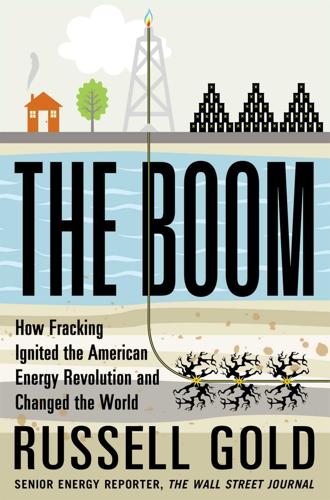
The Boom: How Fracking Ignited the American Energy Revolution and Changed the World
by
Russell Gold
Published 7 Apr 2014
His argument was that the amount of oil in the world is finite and that as production increases, it will reach a peak and then begin to decline. Drawn on a graph, his forecast resembled a bell curve. In the late 1940s, he became interested in the question of how many years of oil supply could be pumped out of the earth and set out to figure it out. At the same time, he studied hydraulic fracturing and wrote a seminal paper on the new technology. The two interests were connected. If hydraulic fracturing could significantly increase the availability of oil and gas, it would make more oil available and push back the date of “Hubbert’s Peak.” But he was not impressed with Stanolind’s hydrafracs. In his famous 1956 paper outlining his ideas on peak oil, he noted that only about one-third of the oil in a reservoir was being recovered.
…
“We were interested in self-sufficiency, reducing our imports, and producing our domestic resources.” Over the course of a decade, Yost helped pioneer many new technologies that would set the stage for the rise of hydraulic fracturing. He and his fellow engineers placed tiny cameras in the wells to figure out what was happening and shot sound waves underground to map the fractures being created, borrowing a technology developed by federal scientists. They tried the first massive hydraulic fractures of shales—twenty years before Mitchell Energy deployed a similar approach. “Most of the industry was ignoring us or saying we don’t care about these shales, we’re off in a foreign country developing larger, high rate of return resources,” said Yost.
…
His backers didn’t care if he used a dowsing stick or a Ouija board, as long as he had a track record of using their money to make good wells. Mitchell was convinced that using science and technology was the path to success in Wise County. As it turned out, the secret to making these wells work was to frack them. “Hydraulic fracturing had just come in about two or three years before,” Mitchell said. “Without hydraulic fracturing, you couldn’t make decent wells.” Using this new technique, Mitchell made good wells. He wasn’t fracking into the tightly packed Barnett Shale, but into a shallower sandstone with natural fractures. By shooting in gels, they were making new cracks that connected with existing cracks, building a drainage network for the gas.
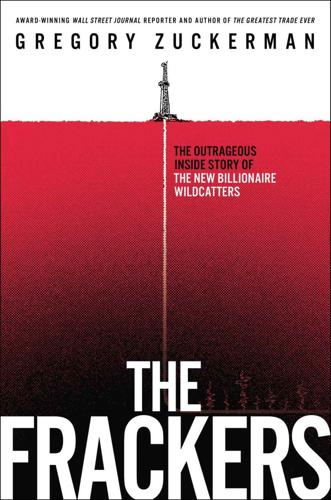
The Frackers: The Outrageous Inside Story of the New Billionaire Wildcatters
by
Gregory Zuckerman
Published 5 Nov 2013
But George Mitchell was willing to try a relatively new drilling technique he had read about in petroleum-engineering literature that held the possibility of loosening up this compact rock and getting the gas to flow. The technique, a way of “completing” oil and gas wells, or preparing them to produce energy, was called hydraulic fracturing, or “fraccing.” It entailed fracturing the rocks, or breaking them up, by pummeling them with various liquids to free up the gas trapped in those rocks. (Years later, hydraulic fracturing became known in the popular media as “fracking,” with a “k” replacing the “c.” From the beginning, industry members detested the word because of its closeness to the common expletive, not to mention a similarity to “fragging,” the act of attacking fellow soldiers.
…
They preferred the traditional method of looking for hydrocarbons: Drill a well, like a straw into the ground, and try to hit pools of trapped oil or gas capable of flowing to the surface without the “artificial stimulation” of hydraulic fracturing. After decades of low gas prices, companies were struggling to keep costs down, not increase spending on hydraulic fracturing. But Mitchell didn’t have much to lose, so he gave fracking a try, hoping to make the Texas fields yield oil or natural gas. Mitchell saw that fracking seemed to do a good job stimulating reservoirs that needed a little help to get going, a bit like giving the back of an old television a little bang.
…
To Michelle For your support, humor, and love CONTENTS TITLE PAGE COPYRIGHT DEDICATION CAST OF CHARACTERS INTRODUCTION PROLOGUE THE BREAKTHROUGH THE RACE EPILOGUE AFTERWORD PHOTOGRAPHS ACKNOWLEDGMENTS NOTES CAST OF CHARACTERS MITCHELL ENERGY George Mitchell Founder Dan Steward Senior executive on the shale-drilling team Nicholas Steinsberger Engineer focused on hydraulic fracturing Kent Bowker Exploration geologist on the shale-drilling team Jim Henry Veteran geologist ORYX ENERGY Robert Hauptfuhrer Chief executive Kenneth Bowdon Geologist CHESAPEAKE ENERGY Aubrey McClendon Cofounder Tom Ward Cofounder Marc Rowland Chief financial officer CONTINENTAL RESOURCES Harold Hamm Founder Jeff Hume Senior executive and engineer Jack Stark Senior executive and geologist CHENIERE ENERGY Charif Souki Founder Meg Gentle Head of strategic planning EOG RESOURCES Mark Papa Chief executive officer Bill Thomas Senior executive OTHERS Sanford Dvorin Son of Newark butcher; tried to drill in the Barnett Shale Ray Galvin Senior executive at Chevron determined to find gas in shale Michael Johnson Septuagenarian who discovered the largest field in the Bakken Buck Butler Cowboy in Nixon, Texas, sitting on shale Elizabeth Irish Oregon native who moved to Williston, North Dakota, with her family INTRODUCTION William Butler was up nights, full of worry.

Power Hungry: The Myths of "Green" Energy and the Real Fuels of the Future
by
Robert Bryce
Published 26 Apr 2011
Williams, “DeGette, Polis Introduce FRAC Act Aimed at Closing Hydraulic Fracturing ‘Loophole,’” The Colorado Independent, June 9, 2009, http://coloradoindependent.com/30784/degette-polis-introduce-frac-act-aimed-at-closing-hydraulic-fracturing-loophole. 4 Oil & Gas Journal, “API Opposes Efforts to Federally Regulate Hydraulic Fracturing,” June 9, 2009, http://www.laserfocusworld.com/display_article/364231/7/none/none/Gener/API-opposes-efforts-to-federally-regulate-hydraulic-fracturin. 5 Jeremy Miller, “Of Hydraulic Fracturing and Drinking Water,” Green Inc., June 30, 2009, http://greeninc.blogs.nytimes.com/2009/06/30/of-hydraulic-fracturing-and-drinking-water/?
…
That was one of the first lessons I learned during a visit to a frac spread located a few miles west of Hillsboro, Texas, on a soggy day in March 2009. The term “frac spread” is oil-field lingo for the collection of trucks, trailers, pumps, hoses, pipes, personnel, sand chiefs, and tanks that are needed for the hydraulic fracturing (“frac” or “frac job”) of a particular subsurface geologic zone. On this particular day, a crew of about two dozen men backed by dozens of trucks and more than 10,000 dieselfueled horsepower were working on two wells, the Padgett #1-H and the Greenhill #1-H. The wells were operated by Houston-based EOG Resources, one of the most aggressive drillers in the Barnett Shale.
…
By themselves, the wells near Hillsboro were not that important; they were just two of the thousands of wells that have been drilled in the sprawling Barnett Shale. But the Padgett and Greenhill wells are emblematic of the shale gas revolution that has changed the global natural gas business. The key technologies used on the two wells near Hillsboro—horizontal drilling and multistage hydraulic fracturing of wells with long laterals—have become standard for producing gas from shale. But it took years to perfect them. Over the past decade or so, the Barnett has been one of the most intensively drilled pieces of real estate on the planet. Between 1997 and 2005, the number of producing wells in the region jumped tenfold.
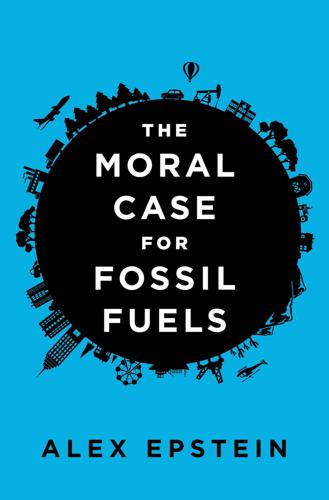
The Moral Case for Fossil Fuels
by
Alex Epstein
Published 13 Nov 2014
Sierra Club, “Beyond Natural Gas,” http://content.sierraclub.org/naturalgas (accessed May 8, 2014). 21. N. R. Warpinski, J. Du, and U. Zimmer, “Measurements of Hydraulic-Fracture-Induced Seismicity,” Society of Petroleum Engineers, SPE 151597, 2012, http://www.energy4me.org/hydraulicfracturing/wp-content/uploads/2013/08/SPE-151597-MS-P1.pdf. 22. Ibid. 23. American Petroleum Institute, “The Facts About Hydraulic Fracturing and Seismic Activity,” 2014, www.api.org/~/media/Files/Policy/Hydraulic_Fracturing/HF-and-Seismic-Activity-Report-v2.pdf. 24. Pierre Desrochers and Hiroko Shimizu, “Innovation and the Greening of Alberta’s Oil Sands,” Montreal Economic Institute, Oct. 2012, p. 16, www.iedm.org/files/cahier1012_en.pdf. 25.
…
As mentioned earlier, the Intergovernmental Panel on Climate Change (IPCC) has demanded that the United States and other industrialized countries cut carbon emissions to 20 percent of 1990 levels by 2050—and the United States has joined hundreds of other countries in agreeing to this goal.42 And the UN panel reassures us that “close to 80 percent of the world’s energy supply could be met by renewables by mid-century if backed by the right enabling public policies . . .”43 Around the world, it is fashionable to attack every new fossil fuel development and every new form of fossil fuel technology, from hydraulic fracturing (“fracking”) in the United States to oil sands (“tar sands”) in Canada. To think about dire measures like this without seriously reflecting on the predictions and trends of the last forty years—and the thinking mistakes that led to those wrong predictions—is dangerous, just as it was dangerous for thought leaders to ignore the benefits of fossil fuels while focusing only on (and exaggerating) the risks.
…
This causes supply security issues in which one country is dependent on an unreliable country for gas supplies—the case with many European countries that depend on gas from Russia. However, new technological developments are overcoming these obstacles. One is shale energy technology, often referred to as fracking in the media and fracing in the industry. Fracking is short for hydraulic fracturing, one of several technologies that can be used to get natural gas out of shale. This technology has attracted attention based on claims that it contaminates groundwater. As we’ll discuss more in chapter 7, the controversy here, as with nuclear, is more ideological than technical. The shale energy revolution has led to a rapid increase in natural gas and oil production in the last decade and has the potential to do much more.8 The combination of horizontal drilling and fracking has turned previously known but economically unreachable reserves of natural gas into easily accessible and cheap natural gas.
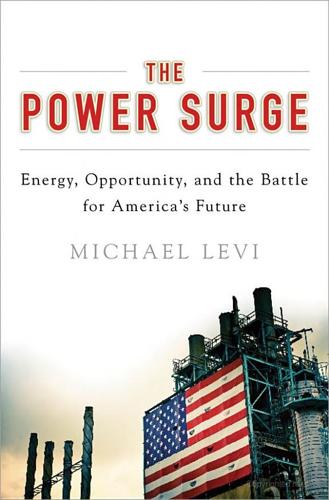
The Power Surge: Energy, Opportunity, and the Battle for America's Future
by
Michael Levi
Published 28 Apr 2013
GLOSSARY Advanced biofuels Barrel Biofuels CAFE standard Cap and trade Carbon capture and sequestration (CCS) Carbon tax Cellulosic ethanol Clean energy standard CO2-EOR Biofuels not made from materials that compete with food (e.g., corn, soy) A unit of measure for oil that is equivalent to fortytwo U.S. gallons Liquid fuels made from biological materials; substitute for gasoline, diesel, or jet fuel Corporate Average Fuel Economy standard, mandating average fuel economy of vehicles sold by each company A policy that imposes a limit on greenhouse gas emissions, distributes permits accordingly, and then allows entities to trade those permits among themselves A technology that captures carbon dioxide emissions from industrial facilities (particularly coaland gas-fired power plants) and deposits them permanently underground A policy that levies a fee to entities that emit carbon dioxide, proportional to the amount emitted A gasoline substitute produces from parts of plants that cannot be eaten A policy that mandates a minimum fraction of electricity be generated from clean sources according to a set schedule; “clean” may be defined to include only zero-carbon sources, or may include natural gas (usually with half credit) and/or efficiency An approach to oil production that injects carbon dioxide into oil wells to increase their productivity 214 • GLOSSARY Corporate Average Fuel Economy Enhanced Oil Recovery (EOR) Ethanol Fossil fuels Fracking Fuel economy standards Gas-to-liquids (GTL) GDP Gigawatt (GW) Green jobs Greenhouse gases Horizontal drilling Hybrid Hydraulic fracturing Intermittent sources Keystone XL kilowatt-hour (kWh) Levelized cost of electricity mpg The average fuel economy of all the cars and trucks sold by a given company; usually computed as a harmonic average Any method that increases the amount of oil that can be produced from a given resource; CO2-EOR is one variation A gasoline substitute produced from biological materials Oil, natural gas, and coal Colloquial term used to describe either hydraulic fracturing or the entire process of extracting natural gas from shale See CAFE standard Technology that converts natural gas into gasoline, diesel, jet fuel, or methanol Gross Domestic Product; standard measure of national economic output A unit of capacity to produce electricity; a typical nuclear plant has a capacity of one gigawatt Often ill defined, but generally refers to jobs associated with environmental products and services, including clean energy Gaseous compounds that block outbound infrared radiation (heat) when they accumulate in the atmosphere A technology wherein operators drill down before turning their drill bits and then drilling sideways A type of vehicle that combines a gasoline engine and an electric engine A technology wherein operators inject high-velocity fluids into a well in order to fracture surrounding rock and stimulate the flow of oil or gas Sources of electricity that cannot deliver consistent power, most notably wind and solar A proposed pipeline connecting the Canadian oil sands to markets in the United States A measure of electricity use The cost of generating electricity divided by the amount of electricity generated miles per gallon; a measure of the efficiency of a vehicle GLOSSARY • 215 Natural gas liquids (NGLs) Oil sands Oil shale OPEC Peak oil Rare earth metals Renewable energy Renewable Portfolio Standard (RPS) Shale Shale gas Shale oil Shock Strategic Petroleum Reserve (SPR) Tight oil Zero carbon energy Liquids that are produced concurrently with natural gas, most prominently ethane, butane, and propane Oil-bearing sands found primarily in the Canadian province of Alberta; also referred to as tar sands Rock that can in part be converted to oil through heating Organization of Petroleum Exporting Countries; cartel that attempts to restrain collective oil output and raise prices The idea that world oil production will soon hit a peak, and then decline, as a result of scarce resources A class of elements in the periodic table, many of which have applications in clean energy technologies Energy whose production does not require depletable resources; wind, solar, and geothermal are examples A policy that mandates a minimum fraction of electricity be generated from renewable sources according to a set schedule Dense rock that often bears oil or gas Natural gas extracted from shale rock See tight oil In economics, a sudden change; in this book, most often a change in energy prices U.S. government-controlled reserves of already produced oil that can be released in the event of a supply emergency Oil produced from formations in which oil cannot flow under normal conditions; produced using hydraulic fracturing to enhance mobility Energy whose production leads to few or no carbon dioxide emissions This page intentionally left blank NOTES CH AP TER 1 1.
…
That was particularly valuable for getting at shale gas, which is found deep underground in thin layers; by drilling horizontally, a well could be placed through a big slice of gas. Horizontal 24 • THE POWER SURGE drilling had been around since 1929 but didn’t really take off until the 1980s, when the French firm Elf Aquitaine demonstrated its commercial promise in southwest France and off the Mediterranean shores of Italy.6 The second technology, hydraulic fracturing, was introduced into commercial practice by Stanolind Oil and Gas in 1947 at the Hugoton field in Grant County, Kansas.7 Similar techniques were used in the early days of oil—back in the 1860s, drillers used liquid nitroglycerin to coax oil out of rock from New York to Kentucky—but that approach was dangerous and never became particularly widespread.
…
By 1949, Stanolind had a patent (and Halliburton secured an exclusive license) on the new process that shot water, chemicals, and other materials deep underground to break apart rock and help oil and gas flow.8 Geologists had long known that there was a massive amount of natural gas trapped in shale rock formations. It took a stroke of innovative genius, though, to tap into it. In the 1980s, George Mitchell, a Texas entrepreneur, began to experiment with combinations of horizontal drilling to span the deep shale with hydraulic fracturing to release natural gas within it; by the late 1990s, his engineers had made the essential commercial breakthroughs. Yet as recently as 2009, you couldn’t even find the words “shale gas” in the annual U.S. government energy outlook.9 By 2012, the document was reporting that nearly a quarter of U.S. natural gas production had come from shale in 2010, a number it projected would jump to half of U.S. production by 2035.10 Prices would rise moderately over that period— government forecasters figured five or six dollars for a thousand cubic feet of natural gas by 2020 seemed reasonable, and most Wall Street analysts pretty much agreed—but natural gas appeared destined to be abundant and relatively cheap.
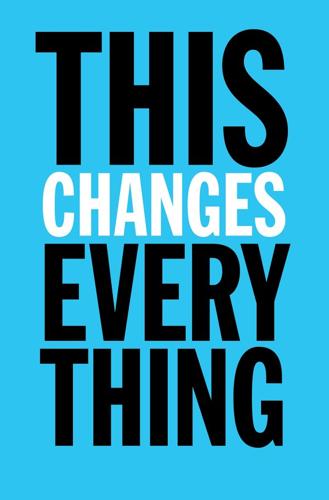
This Changes Everything: Capitalism vs. The Climate
by
Naomi Klein
Published 15 Sep 2014
FOOTNOTE: Abha Parajulee and Frank Wania, “Evaluating Officially Reported Polycyclic Aromatic Hydrocarbon Emissions in the Athabasca Oil Sands Region with a Multimedia Fate Model,” Proceedings of the National Academy of Sciences 111 (2014): 3348; “Oil Sands Pollution Two to Three Times Higher than Thought,” Agence France-Presse, February 3, 2014. 75. “Regulation of Hydraulic Fracturing Under the Safe Drinking Water Act,” Environmental Protection Agency, http://water.epa.gov; Mary Tiemann and Adam Vann, “Hydraulic Fracturing and Safe Drinking Water Act Regulatory Issues,” Congressional Research Service, Report R41760, January 10, 2013; Lisa Song, “Secrecy Loophole Could Still Weaken BLM’s Tougher Fracking Regs,” InsideClimate News, February 15, 2012. 76.
…
Shonkoff, “Public Health Dimensions of Horizontal Hydraulic Fracturing: Knowledge, Obstacles, Tactics, and Opportunities,” 11th Hour Project, Schmidt Family Foundation, April 18, 2012, http://www.psr.org; 280 BILLION: Elizabeth Ridlington and John Rumpler, “Fracking by the Numbers: Key Impacts of Dirty Drilling at the State and National Level,” Environment America, October 2013, p. 4. http://www.environmentamerica.org; “ENOUGH TO FLOOD”: Suzanne Goldenberg, “Fracking Produces Annual Toxic Water Enough to Flood Washington DC,” Guardian, October 4, 2013. 21. Monika Freyman, “Hydraulic Fracturing and Water Stress: Water Demand by the Numbers,” Ceres, February 2014, pp. 49–50, 59–63; David Smith, “Proposed Fracking in South Africa Beauty Spot Blasted,” Guardian, August 23, 2013; “Hydraulic Fracturing and the Karoo,” Shell South Africa, July 2012, http://www.shell.com/zaf.html; “Tampering with the Earth’s Breath” (video), Green Renaissance, Vimeo, May 11, 2011. 22.
…
Faced with a crisis that threatens our survival as a species, our entire culture is continuing to do the very thing that caused the crisis, only with an extra dose of elbow grease behind it. Like the airline bringing in a truck with a more powerful engine to tow that plane, the global economy is upping the ante from conventional sources of fossil fuels to even dirtier and more dangerous versions—bitumen from the Alberta tar sands, oil from deepwater drilling, gas from hydraulic fracturing (fracking), coal from detonated mountains, and so on. Meanwhile, each supercharged natural disaster produces new irony-laden snapshots of a climate increasingly inhospitable to the very industries most responsible for its warming. Like the 2013 historic floods in Calgary that forced the head offices of the oil companies mining the Alberta tar sands to go dark and send their employees home, while a train carrying flammable petroleum products teetered on the edge of a disintegrating rail bridge.
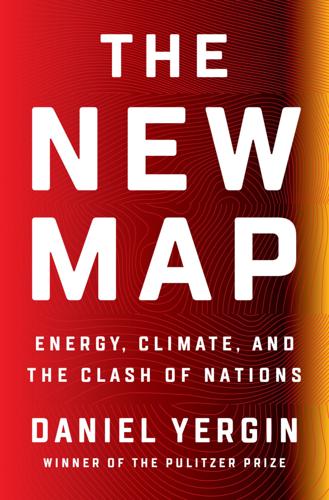
The New Map: Energy, Climate, and the Clash of Nations
by
Daniel Yergin
Published 14 Sep 2020
Year after year, the Mitchell team toiled away to break the shale code. Their goal was to open up tiny pathways in the dense shale so gas could flow through the rock and into the well. To do that, they applied hydraulic fracturing, later much better known as “fracking,” which uses cocktails of water, sand, gel, and some chemicals injected under high pressure into rocks that would break open tiny pores and liberate the gas. Hydraulic fracturing is a technology that had been developed in the late 1940s and has been commonly used in conventional oil and gas drilling ever since. But here the fracking was being applied not to a conventional reservoir but to the shale itself.
…
For two years, Pioneer’s geologists had studied the shales under Pioneer’s nine hundred thousand acres in the Permian. Their conclusion was startling. Under it lay a potential bonanza—not just one layer of shale, but layer upon layer of tight rocks stacked on top of each other like pancakes a mile or two beneath the surface, whose oil could be made to flow in abundant volumes with hydraulic fracturing and horizontal drilling. “That,” said Sheffield, “was the aha moment.” Pioneer abruptly redirected its spending to that resource. In 2012, it drilled its first successful horizontal shale well in the Permian.9 Pioneer was only one of a host of companies that jumped on the new opportunity.
…
.* There were jobs in and around oil and gas fields, manufacturing jobs in the Midwest making equipment and trucks and pipes, jobs in California writing software and managing data, and jobs generated by increased income and spending, like real estate agents and car dealers. What is striking is that, owing to the linkages, the economic impact was felt across virtually all states. This was true even in New York state, where environmental activists and politicians succeeded in getting the state to ban hydraulic fracturing and prevent a new natural gas pipeline that would have carried inexpensive natural gas from the Marcellus in Pennsylvania to gas-short New England. The lack of new pipelines resulted in a prohibition in 2019 on gas hookups for new housing and small businesses in Westchester County, just north of New York City.
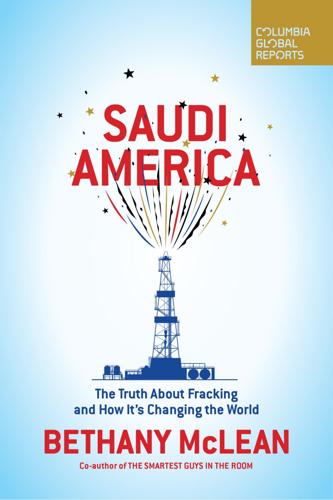
Saudi America: The Truth About Fracking and How It's Changing the World
by
Bethany McLean
Published 10 Sep 2018
This remarkable transformation in the U.S. was brought about by American entrepreneurs who figured out how to literally force open rocks often more than a mile below the surface of the earth, to produce gas, and then oil. Those rocks—called shale, or source rock, or tight rock, and once thought to be impermeable—were opened by combining two technologies: horizontal drilling, in which the drill bit can travel well over two miles horizontally, and hydraulic fracturing, in which fluid is pumped into the earth at a high enough pressure to crack open hydrocarbon bearing rocks, while a so-called proppant, usually sand, holds the rocks open a sliver of an inch so the hydrocarbons can flow. A fracking entrepreneur likens the process to creating hallways in an office building that has none—and then calling a fire drill.
…
Neither Ward nor McClendon were technological pioneers. That distinction, most people agree, goes to a man named George Mitchell, who drew on research done by the government to experiment on the Barnett Shale, an area of tight rock in the Fort Worth basin of North Texas. Using a combination of horizontal drilling and hydraulic fracturing, Mitchell’s team cracked the code for getting gas out of rock that was thought to be impermeable. The few people who were paying attention to what Mitchell was doing were far from convinced that it would succeed. Giants like Exxon were selling off their U.S. properties to the small independent companies and going international.
…
“We see a storm brewing on the horizon,” said Representative Billy Tauzin, Republican of Louisiana and the then-chairman of the Energy and Commerce Committee. (Such fears eventually helped push through the Energy Policy Act of 2005, which exempted natural gas drillers from having to disclose the chemicals used in hydraulic fracturing, thus averting costly regulatory oversight.) As fracking took off, McClendon began telling anyone who listened that the U.S. had enough natural gas to last more than a hundred years. He quietly financed a campaign called “Coal is Filthy,” and he argued that converting 10 percent of U.S. vehicles to natural gas in the next ten years would be the fastest, cheapest way to free the country from dependency on foreign oil.

Liars and Outliers: How Security Holds Society Together
by
Bruce Schneier
Published 14 Feb 2012
The political decision not to regulate the derivatives markets is a good example: not only did it involve lobbyists and campaign contributions to get laws changed, but also public relations to convince journalists and the public that keeping the markets unregulated was a good idea. Here's another example. Hydraulic fracturing, or fracking, is a means of extracting oil and gas from subterranean reservoirs by forcing pressurized fluid into underground rock formations. The process was originally commercialized in 1949 and in its first few decades of use was primarily used to boost production of old wells. Recent advances in horizontal drilling technology, combined with hydraulic fracturing, have enabled the tapping of heretofore inaccessible reserves, and the recent rise in oil prices has made it economically viable.
…
Reno, were eventually able to bargain down their $1.8 million judgment to a measly $17,000 in back taxes and $100,000 in forfeitures. Given that their scam was alleged to be in the vicinity of $100 million, they definitely came out ahead. (13) In April 2011, a Congressional committee report revealed that between 2005 and 2009, the 14 leading hydraulic fracturing companies in the United States used over 2,500 hydraulic fracturing products containing 750 compounds, more than 650 of which were known or possible human carcinogens, substances regulated under the Safe Drinking Water Act, or hazardous air pollutants. (14) The company's arguments were basically 1) we think it's safe, and 2) those chemicals are trade secrets
…
Joseph Farrell and Paul Klemperer (2007), “Coordination and Lock-In: Competition with Switching Costs and Network Effects,” in Mark Armstrong and Robert Porter, eds., Handbook of Industrial Organization, Volume 3, North-Holland, 1967–2072. able to bargain down Tricia Bishop (13 Dec 2008), “Court Orders ‘Scareware’ Shut Down,” Baltimore Sun. Lucian Constantin (16 Jun 2009), “ByteHosting Settles with the FTC in Scareware Advertising Lawsuit,” Softpedia. hydraulic fracturing U.S. House of Representatives Committee on Energy and Commerce Minority Staff (2011), “Chemicals Used in Hydraulic Fracturing.” company's arguments New York Times (3 Nov 2009), “The Halliburton Loophole (Editorial),” New York Times. The same dynamic Frederick P. Brooks, Jr. (1975), The Mythical Man-Month, Addison-Wesley. Senator Bernie Sanders Bernard Sanders (6 Nov 2009), “Too Big To Fail—Too Big To Exist,” Huffington Post.

A Line in the Tar Sands: Struggles for Environmental Justice
by
Tony Weis
and
Joshua Kahn Russell
Published 14 Oct 2014
The geopolitical dimension of this push is plainly apparent in the Harper government’s attempts to promote Canada as a world “energy superpower,” which is capable of enhancing the “energy security” for its friends, most notably the US. It is clear that the race to expand the production of unconventional reserves like bitumen is tied to the decline of conventional oil and gas reserves. In addition to tar sands, this general pressure is also central to the rise of hydraulic fracturing (more commonly known as “fracking”) for “tight” oil and natural gas and the mining of kerogen shale (a bitumen-like substance), as well as increasing offshore drilling in deeper water and higher latitudes for conventional reserves. This overall shift is increasingly being described in terms of a turn towards “extreme fossil energy,” because of the heightened difficulty, costs, risks, and pollution burden it entails.12 The Athabasca tar sands are the world’s largest “extreme energy” frontier, both because of the size of the area and the scale of its bitumen deposits, and because the growth and technological development of the industry there is now helping to stoke the expansion of extraction in similar—though smaller—reserves around the world, in countries such as Venezuela and the United States.
…
This technique is used where bitumen is deeper and impossible to strip mine. In situ extraction works by injecting heated, high-pressure water to melt the earth so that the bitumen can be pushed to the surface. This also requires a tremendous amount of energy, which has been drawn mainly from natural gas (which ties the industry to the expansion of hydraulic fracturing). In the future, nuclear power plants may be constructed in the area to satisfy these immense energy demands.15 Tar sands companies also have a voracious thirst for water. Great volumes are used in the process of separating oil from the clay and sand, and the magnitude of these withdrawals is dramatically altering the water cycle of the vast Athabasca River Basin.
…
Since capitalism needs infinite economic growth and ever-expanding consumption, its logic essentially compels increasing CO2 emissions that threaten the global ecological system—and indeed life itself.8 The growth imperative drives the continual global search for new (though ultimately finite) oil supplies in ways that often have high energy and resource demands (as in the tar sands, and in hydraulic fracturing for shale oil and gas) and carry a large ecological burden. In sum, the conceptual framework of petro-capitalism centres oil as the lifeblood of global capitalism, with the power to fundamentally reshape political institutions from global to national to provincial levels. Yet it is also a system in permanent crisis due to its intractable role in climate change and environmental degradation, alongside inevitable challenges to oil supplies.
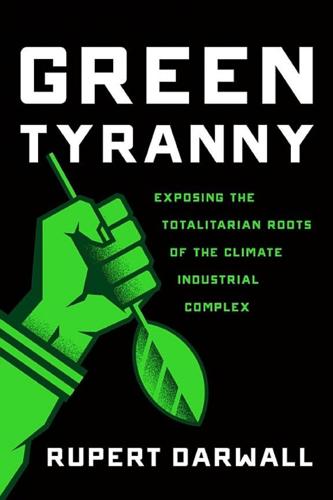
Green Tyranny: Exposing the Totalitarian Roots of the Climate Industrial Complex
by
Rupert Darwall
Published 2 Oct 2017
Environmentalism—the belief that mankind’s activities threaten the survival of both humanity and the planet—found a receptive audience in boardrooms and among those to whom business leaders turn to tell them what is important. Concern about global warming became hardwired into elite thinking just as America was on the cusp of becoming the world’s hydrocarbon superpower. Whereas wind and solar energy comport well with the lassitude of a European continent in relative decline, the energy revolution propelled by hydraulic fracturing—fracking—reflects the continued vitality of American capitalism. For Europe’s green radicals, control of energy policy is a means toward an end. Global warming thus poses a question about the nature and purpose of the state: whether its role is to effect a radical transformation of society or whether its principal task is to protect freedom.
…
As wind and solar capacity rose, carbon dioxide emissions barely fell. Between 1999 and 2012, German power station emissions actually rose. It is a paradox only if it is assumed that the real purpose of renewables was to cut carbon dioxide emissions. If it had been, Germany would have encouraged hydraulic fracturing—fracking—and kept its nuclear power stations going for as long as possible. Germany banned fracking and accelerated the shutdown of its nuclear power stations. Judged by what Germany actually did, global warming was a smokescreen for a radical green agenda and a massive transfer of wealth from consumers to green rent-seekers (Chapter 17).
…
As we saw in Chapter 13, more wind and solar PV capacity has not been matched by lower carbon dioxide emissions (they fell slightly in 2014 thanks to a mild winter)—a paradox only if it is assumed that the Greens’ objective is to cut greenhouse gas emissions. If reducing CO2 emissions had really been the priority, Germany would be building zero-emission nuclear power stations and championing hydraulic fracturing—fracking—of shale gas. Instead Germany is closing its nuclear power stations and has banned fracking. Low-carbon-dioxide-emitting CCGT plant is being closed while higher-CO2 lignite-burning power stations have been built. Between 2011 and 2015, Germany brought online 10.7 GW of new coal-fired capacity.

The Quest: Energy, Security, and the Remaking of the Modern World
by
Daniel Yergin
Published 14 May 2011
Geological Survey, where he was in a permanent battle with some of his colleagues. “He was the most difficult person I ever worked with,” said Peter Rose, his boss at the USGS. Yet Hubbert also became recognized as one of the leading figures in the field and made a variety of major contributions, including a seminal paper in 1957, “The Mechanics of Hydraulic Fracturing.” One of his fundamental objectives was to move geology from what he called its “natural-history phase” to “physical science phase,” firmly based in physics, chemistry, and in particular, in rigorous mathematics. “King Hubbert, mathematician that he is,” said the chief geophysicist of one of the oil companies, “based his look ahead on facts, logically and analytically analyzed.”
…
The Bakken was one of those places where smaller operators drilled wells that delivered just a few barrels a day. By the late 1990s, most people had given up on the Bakken, writing it off as “an economically unattractive resource.”26 But then the impact of the technology for liberating shale gas—horizontal drilling and hydraulic fracturing—be came evident. “As shale gas began to grow, we asked ourselves ‘Why not apply it to oil?’ ” said John Hess, CEO of Hess, one of the leading players in the Bakken. The new technologies worked. Companies rushed to stake out acreage, and a boom in tight oil began to sweep across the Bakken.
…
After all, when almost two decades of effort were added up, it was clear that the company had lost a good deal of money on the Barnett play. But George Mitchell would not give up; he insisted that they were getting closer to cracking the Barnett’s code.3 BREAKTHROUGH Fraccing—otherwise known as hydraulic fracturing—is a technique that was first used at the end of the 1940s. It injects large amounts of water, under high pressure, combined with sand and small amounts of chemicals, into the shale formation. This fragments underground rock, creating pathways for otherwise trapped natural gas (and oil) to find a route and flow through to the well.
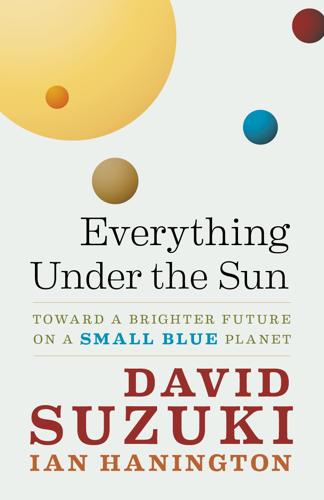
Everything Under the Sun: Toward a Brighter Future on a Small Blue Planet
by
Ian Hanington
Published 13 May 2012
Even in the face of scientific studies showing otherwise, politicians and industrialists were insisting that the tar sands were not affecting the Athabasca and that any contamination found was “naturally occurring.” Our insatiable appetite for fossil fuels has also led to concerns over hydraulic fracturing, or “fracking,” whereby great amounts of water, sand, and chemicals are blasted into wells to fracture the underground shale and release natural gas. Leaks, blow-outs, water contamination, increased ozone in the atmosphere, and emissions of methane, a powerful greenhouse gas, are just some of the possible consequences of this procedure.
…
At the same time, demand for water and threats to clean supplies are increasing as our populations grow and as industry, especially in the energy sector, continues to require greater amounts. Despite technological improvements, the tar sands use considerable amounts of water and pollute rivers and groundwater. Hydraulic fracturing, or fracking, requires massive amounts of water to extract natural gas from shale deposits, and the process is known to contaminate water supplies. Nuclear power plants also require vast amounts of water. The consequences of water shortages and contamination are severe and numerous. Many of us remember the tragedy in Walkerton, Ontario, in 2000, when 7 people died and as many as 2,300 became ill after drinking from wells containing high levels of E. coli bacteria.
…
(Chappell and Lavalle), 180 food webs, 10, 38 forestry, 23 forests. see also logging: caribou habitat loss and, 23; global warming and, 137–39; habitat loss, 15, 23; management, 183, 215–18; preservation, 109–11; protection, 139–41 fossil-fuel industry, 71–73, 74–76, 131, 153 fossil fuels, 57–58, 116, 160 fracking, 73, 213 fragrances, 206, 207–10 frequency hopping, 98 frogs, 11–14 fruits, 177–79 Fukushima Daiichi nuclear power plant, 57, 59 fungus spread, 12–13 The Future Eaters (Flannery), 245 garbage, 41–43 gas pipelines, 74–77 genetically engineered (GE) organisms, 85 genetically modified (GM) foods, 178, 185–87 genetically modified organisms (GMOs), 186–87 genetics, 92, 210–12 genome studies, 210–12 German, energy grid, 61–64 Gisborne, Brian, 174 global cooling, 136 globalization, 26–27, 188, 201, 222 global warming, 13, 116–17, 117–21, 135–40, 141–44, 149–51, 155, 185 Google, 66, 166–68 Gore, Al, 64 government: banking regulations, 81; bluefin tuna fishery, 201; ecosystem-based management, 165–66; public property sale, 74–77; water conservation, 215 Great Bear Rainforest, 16, 28 green, being, 248–51 greenbelts, 113 greenhouse gases, 41–44, 55, 60, 69, 70, 121, 140–41 Greenwood, Charles, 54 Grist.org, 114–15, 180–81 Gulf of Mexico, 57, 70, 72, 76, 172 Gunny (grandson), 225–26 Guujaaw (Haida leader), 28 habitat, 18, 33, 34, 110 habitat loss and degradation, 7, 13, 17–18, 34, 139 Haida Gwaii, 16, 217 Hanke, John, 167 Hansen, James, 120 Harper, Stephen, 58–59, 69, 83–84, 145, 236, 257 harvesting, 7, 182–84 health: cycling and, 47; environment and, 203–5; exercise, 227; genetic diseases, 211; impact from wind power, 65; outdoor activity, 221–23; personal care products, 205–7, 209; staying active, 218–20; tar sands, 70 hemp fibre, 54 Henderson, Hazel, 106 herbicides, 184 Hollywood, 98–100 human activity, 251–53 human-caused, climate change, 130–33, 152 human-caused, global warming, 116, 117, 135–36, 185 human movement, 26–27 hunting, 28–29, 30–32 hydraulic fracturing (fracking), 73, 213 ice melt, 160 In Defense of Food (Pollan), 178 Inhofe, James, 97 Intergovernmental Oceanographic Commission of UNESCO, 21, 160–61, 217 Intergovernmental Panel on Climate Change (IPCC), 11, 38–39, 128–30, 131, 134, 142 International Assessment of Agricultural Knowledge, Science and Technology for Development, 185–86 International Programme on the State of the Ocean (IPSO), 155 International Union for Conservation of Nature (IUCN), 7, 13, 200 invasive alien species, 7, 25–27 Jackson, Lisa P., 152 Japan, 57–58, 199–200 Kakfwi, Stephen, 24–25 Keever, Marcie, 170 Kent, Peter, 69 Kingsnorth, Paul, 122–24 Klein, Ross, 168 Koch-Exxon-Scaife, 131 Kyoto Protocol, 61, 117, 131, 246 Lamarr, Hedy, 98 Latham, Jonathan, 212 Lavalle, Liliana, 180 Legacy Lecture, 259 LePage, Paul, 96 Levant, Ezra, 69, 70 Lewis, Marlon, 152–53 Lewis, Simon, 134 light, 261–63 local food production, 187–89 “locavorism,” 187–89 logging, 15, 34, 109–10, 138, 141, 184, 247, 257 Loorz, Alec, 229 Louv, Richard, 221 Lubicon Lake Indian Nation, 81–82 macaw, 14–16 Maddow, Rachel, 80 Managing Without Growth: Slower by Design, Not Disaster (Victor), 105, 236 manduvi trees, 14–16 Mann, Michael, 132, 134 Mansbridge, Peter, 257 Massey Energy, 74–75 McClintock, Barbara, 92 McKellar, Danica, 99 McKibben, Bill, 142 Merchants of Doubt (Oreskes and Conway), 150 methane emissions, 41–42 Métis peoples, 23, 182 Michaux, Ernest, 46 microbes, 203–5 milkweed, 20–21 Mills, Dora Anne, 65 mining, 23, 34, 59–61, 115 Monbiot, George, 53, 122–24 Monsanto, 177–78, 184, 185 Moola, Faisal, 184 Müller, Paul, 85 nanotechnology, 85 natural disasters, 251–53 nature: bats last, 244–46; goods and services, 112–14; at home with, 237–39; limits of, 124–26; value of, 103–4, 106 “nature deficit disorder,” 222 Nature of Things, The, 247, 256 New Zealand, 10, 255 Nikiforuk, Andrew, 66–67, 115–16 nitrogen cycle, 244 Northwest Territories, 23, 24, 111 nuclear fuels, 57–58 nuclear power, 58–61, 213, 253 Obama, Barack, 74, 83–84 ocean ecosystem: acidification, 155–57, 162–93; basking sharks, 173–75; beluga whales, 171–73; carbon, 160; caring for, 161–63; “dead zones,” 180; Google, 166–68; humans and, 157–59; marine life extinction, 155–57; plastic waste, 158–59, 162, 172 oil and gas development, 23, 140, 216 oil and gas industry, 74, 76–78 oil drilling, 76–78 oil industry, 11, 62, 67–73 oil spill, Gulf of Mexico, 57, 70, 72, 76, 78–79, 172 oil spills, 76, 78–80 Onstott, Tullis, 85 Ontario, 23–24, 52, 64, 189 Oreskes, Naomi, 131, 150 Organization of Petroleum Exporting Countries (OPEC), 62–63 outdoor activity, 221–23 ozone agreement, 149–51 Pacific North Coast Integrated Management Area (PNCIMA), 16, 164 packaging, 42 Pauly, Daniel, 197 Peñalosa, Enrique, 48 perceptions, world, 246–48 personal-care products, 205–7 pesticides, 13, 17–18 phosphates, 248–49 phthalates, 206–7 phytoplankton, 151–53 pipelines, 74–77 Pizo, Marco, 14 plants, invasive alien species, 25–27 plastic waste, 41, 42, 158–59, 162, 172 poaching, 35 political change, 173 political discourse, 116–17 Political Economy Research Institute, 50 politicians, rejecting science, 95–98 Pollan, Michael, 178–79 pollinators, 17, 112 pollution, 7, 40–42, 55, 65, 155, 169, 205, 248–49 population growth, 232–34, 238, 244 Portman, Natalie, 98–99, 100 predation, 15, 30 Proceedings of the National Academy of Sciences (journal), 30, 145, 195 Quebec, 23–24 Queen of Green, 260 Queen of the North, 77 reduce, reuse, recycle, 41–42 red-winged blackbirds, 37 regulatory failures, 81–83 Relman, David A., 203 renewable energy, 61–64, 141–44 research, 130–33 resource exploitation, 115–16 River Thames, 25–26 Rogers, Alex, 156 role models, 226–27 Rowland, F.
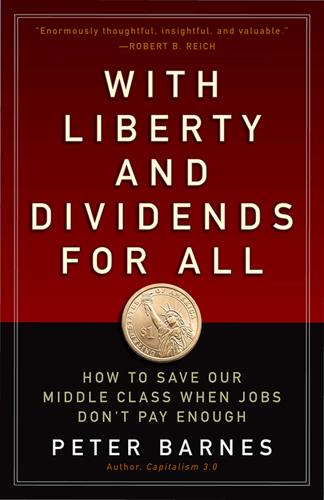
With Liberty and Dividends for All: How to Save Our Middle Class When Jobs Don't Pay Enough
by
Peter Barnes
Published 31 Jul 2014
A fee is, after all, merely a signal, not a physical limit, and for highly addictive substances like alcohol, tobacco, and fossil fuels, signals aren’t enough. Moreover, a carbon tax is only one factor in the price of fossil fuels; it can easily be lost in the fluctuations of other factors. Think of the recent plunge in natural gas prices due to hydraulic fracturing. And imagine what might happen if similar breakthroughs in oil recovery or discovery occur. Further, even if a carbon tax pushes the total price of fossil fuels upward, no one knows how high the tax needs to be to reduce emissions to a safe level. That means the only way to proceed is by trial and error.
…
See also Social insurance nonlabor income and, 42 price-setting and, 63–64 recycled rent and, 66 sustainable purchasing by, 37 Green jobs, recommendations for, 21 Guaranteed minimum income, 80–81 H Hacker, Jacob, 125 Hammond, Jay, 69–77, 121–122 Hannity, Sean, 75 Hansen, James, 115 Health care. See also Medicare legislation on, 110, 111–112 rent and, 53–54 Heintz, James, 143 Hewlett-Packard, 25–26 HFC-23, 105 Hoover Vacuum Cleaner company, 26 Hussein, Saddam, 130 Hydraulic fracturing, 115 I IBM, jobs at, 23 Immigration, 16 Income. See also Nonlabor income even flow of, 35–36 guaranteed minimum income, 80–81 pipes for delivering, 36 privileges, rent and income from, 52–53 Income taxation. See Taxation Incremental possible, 121 India and HFC-23, 105 Industrialization, 16 Inequality, spiral of, 32–33 Inflation and debt-free money distribution, 91 Innovation, 25–26 Insourcing, 26–27 Intel, 25–26 Intellectual property rights dividends from, 144 protection of, 94 Internalizing externalities, 63 Internet, 128–129, 145–146 Investment banks, 54–55 Iraq, 130 J Japan and money distribution, 92 Jevons, William Stanley, 116 Jevons Paradox, 116 Jobs, 22–24.

Energy and Civilization: A History
by
Vaclav Smil
Published 11 May 2017
Production platforms installed at major offshore fields are among the most massive structures ever built. And the most recent production advance is the rising extraction from nonconventional sources of crude oil, including heavy oils (in many places around the world), oil embedded in tar sands (Alberta, Venezuela), and extraction by hydraulic fracturing to produce oil from shales. This technique, pioneered in the United States, has proved so successful that America became once again the world’s largest producer of crude oil and other petroleum liquids—but if only crude oil is considered, Saudi Arabia was still a tiny bit ahead in 2015, producing 568.5 Mt compared to 567.2 Mt for the United States.
…
Cities in the rapidly modernizing countries of Latin America and Asia have followed the trend, although many of them, including Tokyo and other Japanese conurbations, Seoul, Guangzhou, Shanghai, and Mumbai, had to do it with expensive imported liquefied natural gas (LNG). The latest trend boosting natural gas use has been the fuel’s efficient use for generating electricity by gas turbines and, even more efficiently, by combined-cycle gas turbines (see the next section). Post-2005 hydraulic fracturing has not only stopped the further decline of American natural gas extraction but also it made the country, again, the world’s largest producer. Pipeline transport of natural gas is inherently more expensive than moving liquids, and long-distance pipelines became economical only with the introduction of large-diameter steel pipes (up to 2.4 m in diameter) and efficient gas turbine compressors (Smil 2015a).
…
As the economies recovered and the Chinese demand continued to rise, oil prices rose once again above $100/bbl in July 2014, but then the falling demand and rising supply (mainly owing to the reemergence of the United States as the world’s largest producer, thanks to rapid increases in shale oil production through hydraulic fracturing) brought a deep reversal. But this time there was a key difference: in order to protect the country’s global market share, Saudi leaders decided to keep producing at maximum output rather than, as in the past, cutting output and propping up the price. Once again, the decisions made by a few men has worldwide consequences for the political stability of countries heavily dependent on oil exports, as well as for all major non-OPEC oil producers, including the United States and Canada.
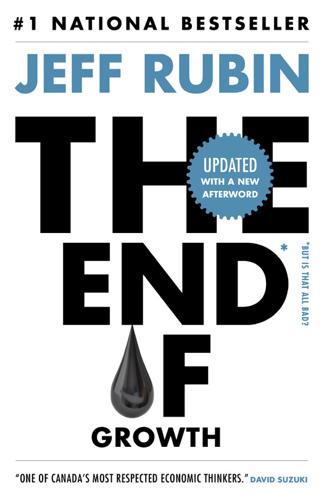
The End of Growth
by
Jeff Rubin
Published 2 Sep 2013
The higher crude prices go, the more oil the industry will extract from the bowels of the earth. Oil is a big-money game. As long as there are profits to be made, the energy industry will keep finding ways to pull more oil out of the ground. But make no mistake—technological breakthroughs you may have read about, like hydraulic fracturing, which are helping the industry increase production, aren’t a magic bullet that will solve the world’s energy needs. Fracking, for example, involves injecting an oil and gas formation with a high-pressure mixture of water, chemicals and sand to help increase the porosity of the subsurface rocks that hold the resource.
…
Backed by an expectation that production from these and other tight oil plays will continue to increase by leaps and bounds, the IEA is now forecasting the US will pass Saudi Arabia to become the world’s largest oil producer by 2017. It’s a remarkable turnaround for the energy fortunes of the world’s biggest energy consumer. But it must also be noted that the advances in horizontal drilling and hydraulic fracturing behind this energy renaissance don’t come cheap. Environmental advocates, for one, are sounding loud alarm bells about the harm being caused by such a swift ramp up in industrial activity. Indeed, the oil boom in North Dakota is now so big it can be seen from space. A decade ago, nighttime pictures taken from the International Space Station show the US Midwest as a black void of rural darkness.
…
CHAPTER 4: HITTING THE ENERGY CEILING this page: Production of shale gas has more than its share of critics, many from the environmental movement. A 2010 documentary, Gasland, by filmmaker Josh Fox chronicled some of the environmental mishaps that have occurred as a result of drilling in the Marcellus formation in Pennsylvania, New York, Ohio and West Virginia. Hydraulic fracturing, the key process used to extract shale gas, was exempted in 2005 from the Safe Drinking Water Act (1974), a step that paved the way for a wave of drilling across the country and put a spark to much of the current controversy over fracking. this page: The data on China’s coal consumption is measured in short tons, a unit of weight equal to 2,000 pounds.
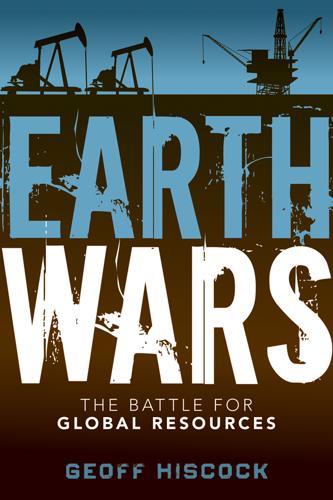
Earth Wars: The Battle for Global Resources
by
Geoff Hiscock
Published 23 Apr 2012
CNOOC came back for more a few months later, agreeing to pay $570 million in March 2011 for a one-third interest in Chesapeake’s leasehold acreage in the Denver-Julesburg (DJ) and Powder River Basins in northeast Colorado and southeast Wyoming, in what is known as the Niobrara shale formation. CNOOC also agreed to fund drilling and completion costs up to $697 million, which Chesapeake expected to occur by the end of 2014. The deals give CNOOC both a toehold in the United States and access to the complex technology of hydraulic fracturing and horizontal drilling that is the hallmark of U.S. shale gas and oil extraction. Swing to Unconventional Resources CNOOC’s partner Chesapeake Energy is at the forefront of what is potentially the biggest trend in the U.S. energy market—the swing to unconventional resources such as shale gas and oil, and the associated higher-margin gas-to-liquids conversion technology.
…
Chesapeake’s co-founder and executive chairman, Aubrey McClendon, is the industry’s most tireless promoter, pointing out that thanks to shale gas, the United States passed Russia in 2009 as the world’s largest natural gas producer. He portrays the emergence of shale gas as an energy revolution so enormous that U.S. industry enjoys the lowest natural gas costs in the world. McClendon also tackles head-on the objections by environmental groups and some affected landowners that the hydraulic fracturing—or fracking—technique used to extract gas from shale deposits buried deep below the ground in a string of American states is bad for people’s health and contaminates water supplies. In a speech in Philadelphia in September 2011, McClendon said that pulling the plug on natural gas because of antifracking protests would have a very bad economic effect.
…
Pluto, Gorgon, Prelude, and Wheatstone are all based on Australia’s west coast, but there is also activity on the east coast, near the industrial city of Gladstone in Queensland, where at least four large LNG plants are proposed using coal-seam gas from the southern and central Queensland gas fields. Coal-seam gas (CSG), also known as coal-bed methane (CBM), is methane trapped underground, and is one of several sources of unconventional natural gas, along with shale gas and “tight” gas (usually found in sandstone reservoirs) that require hydraulic fracturing, or fracking (see Chapter 11 for a description of fracking). As in the United States, there is opposition in Australia to the fracking process. The technology for converting CSG to LNG for export is at an early stage, but the various groups planning to ship from Gladstone are pushing ahead with their plants.

Five Billion Years of Solitude: The Search for Life Among the Stars
by
Lee Billings
Published 2 Oct 2013
Pennsylvania’s energy fortunes sharply rebounded in the first decade of the new millennium. As oil production from conventional, easily accessible reservoirs peaked, energy companies devised new methods to wring more oil and gas from harder-to-reach, “unconventional” source rocks. The most successful new method was hydraulic fracturing, or fracking, which squeezed previously inaccessible natural gas from deeply buried shales. When a gas-bearing shale lies beneath miles of rock, as it does throughout the Allegheny, the resulting pressure can lock gas within the formation. Pumping millions of gallons of high-pressure, chemical-laced water down a borehole, however, splinters the shale rock, and granules of sand or ceramic added to the slurry prop open the fractures.
…
acid runoff, 173, 175 Alienopoly, 260 Allegheny Plateau, 124–28 Allen, Paul, 12 Allen Telescope Array (ATA), 12–14, 41, 42 Alpha Centauri, 36, 52, 73, 232, 234 search for planet near, 94–98 simulations of planetary assembly in, 96, 97 American Astronomical Society, 194 Americas, 21–22 anaerobes, 129, 140, 142, 143, 169 Anaximander, 78 Anderson, Eric, 258 Andromeda Galaxy, 31, 191, 238 Anglada-Escudé, Guillem, 64–69 anthracite coal, 125, 131, 134, 136, 137, 144, 160, 184 Anthropocene era, 135–37, 145, 146 anti-gravity devices, 100 Apollo program, 1, 50, 151, 187, 202, 212, 239 Archean Eon, 139–40, 141, 169, 171, 184, 200 Arecibo Observatory, 39–42 Ares V, 203 Aristarchus, 79–81, 86 Aristotle, 78–79, 82 Arthur, Janice, 121–23 Arthur, Mike, 121–24, 127–30, 136–38 Asimov, Isaac, 152 asteroids, 3, 19, 76, 110, 140, 154, 258 Earth struck by, 30 astrobiology, 15, 153, 169, 231 astronomy, 4, 33, 48, 111, 190 Copernican Principle (principle of mediocrity) in, 83, 89, 91 golden age of, 192 modern, beginning of, 82 see also cosmology Astrophysical Journal Letters, 67 Atchley, Dana, 15 Atlantis, 185–87 ATLAST (Advanced Technology Large-Aperture Space Telescope), 198, 203, 230 atomic weapons, 23–24 atoms, 43, 79–81, 248 Automated Planet Finder (APF), 61, 70, 114 Bahcall, John, 249, 251 Bains, William, 261 Barnard’s Star, 52 Baum, Frank, 11 Beichman, Charles, 221–22 Berner, Robert, 178 Big Bang, 89–91 biosignatures, 167–72, 261–62 black holes, 88–89, 191, 206 black shales, 123–26, 135, 137–38, 141 in Marcellus formation, 126–30, 137, 138, 141, 144, 160 Bode, Johann, 109 Bode’s law, 109–10 BoingBoing.net, 74 Bonfils, Xavier, 66–69 Bradbury, Ray, 98–99 Bryson, Bill, 144 Bush, George W., 196, 198, 215, 221–23 Butler, Paul, 55, 58–70, 96, 114 Caldeira, Ken, 181 California, 105–7, 112–13 gold rush in, 105–6, 111, 112–13 Calvin, Melvin, 15, 19–20, 25 Cambrian Period, 138–39, 143–45, 182 Cameron, James, 258 Campbell, Joseph, 261 Canada, 244–48 Canadian Shield, 246 Capella, 239 carbon, 123, 131, 132, 134, 135, 140, 141, 175, 179, 182 carbonate-silicate cycle, 175–81, 184 carbon cycle, organic, 175 carbon dioxide (CO2), 124, 132, 134–37, 140, 141, 157, 159–62, 168, 170, 172, 173, 175–82, 184 Carboniferous Period, 131, 132 Carina Nebula, 238 Carnegie Institution, 251 Carpenter, Scott, 100 Carter, Jimmy, 240 Cash, Webster, 219–20 Cerro Tololo Inter-American Observatory, 96 Challenger, 3, 188–89 Chandra X-Ray Observatory, 192, 209 Chaotian Eon, 139 Charbonneau, David, 228–30, 232 charged-coupled devices (CCDs), 51–53 China, 21–22 chlorofluorocarbons, 134, 142 chlorophyll, 141, 143 Christmas Tree Cluster, 238 Clinton, Bill, 196, 215 clouds, 161–62, 164, 206 coal, 125, 131, 134, 136, 137, 144, 160, 184 Columbia, 189, 196 comets, 2, 3, 19, 76–77, 140 Halley’s, 3 Compton Gamma Ray Observatory, 192, 209 computers, 43–44 Constellation program, 196, 198, 203, 204, 215, 221, 223 convergent evolution, 21 Cook, James, 85–86 Copernican Principle (principle of mediocrity), 83, 89, 91 Copernicus, Nicolaus, 81–83, 86, 87, 89, 91, 200 Cornell University, 39, 42 coronagraphic TPF, 217–22, 224, 231, 249 coronagraphs, 217 cosmology, 77–82 Copernican Principle (principle of mediocrity) in, 83, 89, 91 inflationary theory in, 89–92 modern, 86–87, 91 see also astronomy Cosmos, 240 Costanza, Robert, 74–75 Crab Nebula, 30 Crabtree, William, 84 Crutzen, Paul, 134–35 Cuban missile crisis, 23–24 cyanobacteria, 140–44, 175, 183 Daily Mail, 74 dark energy, 88, 90 dark matter, 206 Darwin, Charles, 200 Davidson, George, 113 deep time, 145–46 Democritus, 79, 80, 92, 238 Demory, Brice, 259 De Rerum Natura (On the Nature of Things) (Lucretius), 80–81 De Revolutionibus Orbium Coelestium (On the Revolutions of Heavenly Orbs) (Copernicus), 82 Devonian Period, 128, 130–32 Diamandis, Peter, 258 dinosaurs, 30, 136, 144 Discovery, 189 DNA, 40, 141, 143, 170 dolphins, 16, 20–21 Drake, Frank, 9–17, 27–45, 101, 167–68, 240 Arecibo transmission of, 39–41 orchids of, 37–38 Drake equation, 16–25, 28–29, 38–39, 41, 42, 183 longevity of technological civilizations (L term) in, 22–25, 38–39, 41, 42 Draper Laboratory, 256 Dyson, Freeman, 104 Dyson spheres, 104, 105 Earth, 109 asteroid strike on, 30 atmosphere of, 3, 132, 134–35, 139, 140, 144, 157–60, 168–69, 174–77, 206, 238 “Blue Marble” images of, 212, 239–41 carbonate-silicate cycle on, 175–81, 184 climate of, 123–24, 128, 132–37, 142, 144, 156–57, 160–62, 173–75, 184 in early cosmology, 77–82 energy consumption on, 103–4 extinctions on, 43, 135, 184 faint young Sun problem and, 173–75 formation of, 2, 7, 20, 139, 173 geologic time periods of, 128–45 glaciation on, 132–34, 142, 174, 176, 178, 179, 183 human population of, 43, 100, 134, 136 ice caps of, 128, 132–33, 135, 136, 184 Laughlin’s idea for moving orbit of, 76–77 Laughlin’s valuation of, 73–76 oxygen on, 139–44, 159, 171, 180–82, 200, 238 Snowball Earth events, 142, 174, 179 Sun’s distance from, 83, 86 tectonic plates of, 30, 105, 111, 128, 140, 144, 176, 229 union of organisms with geophysical systems on (Gaia hypothesis), 175, 176, 178, 183 water on, 3, 30, 158–61, 174, 177–80, 182 Earth, life on, 31, 154 diversification and explosion of, 138–39, 143, 144, 182 emergence of, 4, 7, 19–20, 238 end of, 7–8, 31–32, 75–77, 159, 180–83 essential facts of, 29–30 humanity’s ascent, 144–46 intelligent, 20–21, 182–83 jump from single-celled to multicellular, 28 redox reactions and, 168 Earth-like planets, 29, 32–34, 71–72, 99, 227–28 Earth-size or Earth-mass planets, 6, 53–54, 56, 200, 227, 251 ecology and economics, 74 economic growth, 102, 103 Eddington, Arthur, 35 Edison, Thomas, 106 Einstein, Albert, 35, 87 Elachi, Charles, 211–12, 214, 221 electricity, 103, 136 Emerson, Ralph Waldo, 254 Endeavour, 190 endosymbiosis, 143 energy, 103–4, 136–38 from fossil fuels, 103, 124–27, 137, 154, 160, 184 Engelder, Terry, 126 Epicurus, 80 Epsilon Eridani, 10–11 Eshleman, Von, 35 ethanol, 137 eukaryotes, 143, 144 European Southern Observatory (ESO), 60, 64, 66 European Space Agency, 222 evolution, 183 convergent, 21 of universe, 88–89 exoplanetology, 13, 14, 34, 51, 193 exoplanets, 5, 27–28, 87, 222–23, 263 51 Pegasi b, 50, 53, 54, 58–59 Alpha Centauri Bb, 98–99 biosignatures and, 167–72, 261–62 Blue Marble images of, 212–15 distinguishing between various compositions of, 251 Earth-like, 29, 32–34, 71–72, 99, 227–28 Earth-size or Earth-mass, 6, 53–54, 56, 200, 227, 251 formation of, 109 GJ 667Cc, 65–69, 72 Gliese 581c, 163 Gliese 581d, 163 Gliese 581g (Zarmina’s World), 63–64, 68, 69, 72, 163 Gliese 876b, 60 habitability of, 154–83 HD 85512b, 163–64 Jupiter-like, 13, 28, 50, 56, 59, 60, 108, 109, 226, 228, 248–49 Laughlin’s valuation of, 71–77 migration theory and, 108 Neptune-like, 56, 108–9, 251 “Next 40 Years” conference on, 225–35, 263 observation of stars of, 33 snow line idea and, 110 super-Earths, 228–29, 251, 262 transits of, 53 TrES-4, 228 exoplanet searches, 5–7, 13–14, 32–33, 69–70 and false-alarm discoveries, 52–53 press releases on progress in, 163–65 SETI and, see SETI spectroscopy in, see spectroscopy, spectrometers see also telescopes Ferguson, Chris, 185–86 financial markets, 111–12 Fischer, Debra, 59, 61, 62, 69, 96 Ford, Eric, 249–50 Ford, Henry, 125 fossil fuels, 103, 124–27, 137, 154, 160, 184 fracking (hydraulic fracturing), 126–27 Gaia hypothesis, 175, 176, 178, 183 galactic planetary census, 54 galaxies, 87, 88, 99, 238 Andromeda, 31, 191, 238 Hubble Telescope and, 191 Local Group of, 88 Milky Way, see Milky Way Galileo, 241–42 Galileo Galilei, 81–83, 210 Galliher, Scot, 257 Garrels, Robert, 178 gas, natural, 125–27, 137, 184 Gemini telescopes, 199–200, 203 General Dynamics Astronautics time capsule, 100–103 geologic time periods, 128–45 geology, 110–11, 123 glaciers, 132–34, 142, 174, 176, 178, 179, 183 Glenn, John, 100 Goldin, Dan, 194, 211, 215, 242 governments, Urey on, 102 gravitational lenses, 35–37 Great Observatories, 192, 197, 209 Greece, ancient, 77, 92, 238 Green Bank conference, 15–25, 27–28, 101, 167–68, 240 greenhouse gases, 124, 134, 137, 157, 160, 174, 175 carbon dioxide, see carbon dioxide methane, 140, 142, 168–71, 174, 200 Grunsfeld, John, 197–99, 225–26, 235 Guedes, Javiera, 96 Gund Institute for Ecological Economics, 74–75 “Habitable Zones around Main Sequence Stars” (Kasting), 155–56, 159 Hadean Eon, 139–40, 156 Halley, Edmond, 84 Halley’s comet, 3 Hart, Michael, 174, 178 Hays, Paul, 176–79 heliocentrism, 79–82 Hiroshima, 23 Holmes, Dyer Brainerd, 100–101 Holocene Epoch, 133–35, 145 Horrocks, Jeremiah, 84 Howard, Andrew, 62 How to Find a Habitable Planet (Kasting), 167 Hu, Renyu, 259 Huang, Su-Shu, 15, 19 Hubble, Edwin, 86–87 Hubble Space Telescope, 189–93, 195, 197–99, 205–7, 209, 218–19, 226 human genome project, 234 hydraulic fracturing (fracking), 126–27 hydrogen, 159, 170–72 Icarus, 155 ice ages, 132, 133, 142–43 Industrial Revolution, 22, 134 inflationary theory, 89–92 Ingersoll, Andrew, 159 intelligence, 20–21, 23, 32, 182–83 interferometry, 213–14, 216, 231 International Space Station (ISS), 187, 189, 197, 202, 207–8, 210 interstellar travel, 44–45, 100–101 iron, 141 James Webb Space Telescope (JWST), 193–99, 202–4, 209, 215, 216, 218, 220, 225, 262 Jensen-Clem, Becky, 259 Jet Propulsion Laboratory (JPL), 211–12, 216, 219, 221–25, 231 Johnson, Lyndon B., 101 Journal of Geophysical Research, 178 Jupiter, 76, 109, 191, 239 Galileo’s study of, 81 Kepler’s laws and, 83 moons of, 28, 110 Jupiter-like planets, 13, 28, 50, 56, 59, 60, 108, 109, 226, 228, 248–49 Kasdin, Jeremy, 219–20 Kasting, Jerry, 150–52 Kasting, Jim, 150–67, 169–84 children of, 153 Kasting, Sandy, 150 Kasting, Sharon, 153 Keck Observatory, 59, 60, 62, 66, 118 Kennedy, John F., 224 Kennedy Space Center, 185 Kepler, Johannes, 82, 83 planetary motion laws of, 82–84 Kepler field stars, 41 Kepler Space Telescope, 13–14, 53–54, 56, 62, 71–73, 98, 108–9, 166, 201, 225, 229–30, 263 Kirschvink, Joseph, 142 Knapp, Mary, 259 Korolev, Sergei, 186 Kuchner, Marc, 217–18 Kuiper Belt, 76 Large Magellanic Cloud, 238 Lasaga, Antonio, 178 Late Heavy Bombardment, 3, 140 Laughlin, Greg, 5–6, 48–50, 53–57, 69–70, 93–100, 107–12, 114–15, 117–20 Alpha Centauri planet search and, 94–98 idea to move Earth, 76–77 magnetic toy of, 93–94 SETI as viewed by, 99 valuation equation of, 71–77 laws of nature, 155–56 Lederberg, Joshua, 15, 16, 167–68 Le Gentil, Guillaume, 85, 117 Leinbach, Mike, 185–86 Lick, James, 112–14 Lick Observatory, 58, 61, 62, 70, 113–19 life, 32 on Earth, see Earth, life on intelligent, 23, 32 single-celled, 20 technological, see technological civilizations light: photons of, 72, 89, 115–16, 156, 191, 193–94, 201, 202, 213, 216, 237–38 polarization of, 115–16 waves of, 213–14, 216 Lilly, John, 15–16, 20–21 Local Group, 88 Lovelock, James, 168, 170, 174–76, 178, 181–83 Lucretius, 80–81 Lyot, Bernard, 217 Madwoman of Chaillot, The, 36 Manhattan Project, 23 Marcellus Center for Outreach and Research, 127, 149 Marcellus formation, 126–30, 137, 138, 141, 144, 160 Marconi, Guglielmo, 48 Marconi Conference Center, 48–50, 53–57 Marcy, Geoff, 57–63, 69, 70, 114, 194, 230–32, 235 Margulis, Lynn, 175 Mars, 19, 50, 87, 100, 107, 109, 155, 167, 179, 191, 192, 239 Kepler’s study of, 82, 83 missions to, 187, 188, 196, 207, 221 water on, 28, 179 Marshall, James, 105–6, 112 Martian Chronicles, The (Bradbury), 98–99 Massachusetts Institute of Technology (MIT), 251–52, 259 ExoplanetSat project, 256–57 “Next 40 Years of Exoplanets” conference at, 225–35, 263 Mayor, Michel, 58 McPhee, John, 145 mEarth Project, 228–29 mediocrity, principle of (Copernican Principle), 83, 89, 91 Mercury, 82, 109, 239 meteorites, 20 methane, 140, 142, 168–71, 174, 200 methanogens, 140, 142, 169 microbes, 28 Miletus, 77 Milky Way, 16–17, 25, 31, 39, 41, 79, 86–87, 191, 237, 238 Sun’s orbit in, 95 Miller, George P., 101 Miller, Stanley, 19 Miller Institute for Basic Research in Science, 48, 74 mitochondria, 143 Moon, 3, 76, 100, 229, 242 in early cosmology, 78, 83 formation of, 30, 139 Moon, missions to, 188, 196, 221, 224 Apollo, 1, 50, 151, 187, 202, 212, 239 Morrison, Philip, 15, 18–19, 21, 23–24 Mosely, T.
…
acid runoff, 173, 175 Alienopoly, 260 Allegheny Plateau, 124–28 Allen, Paul, 12 Allen Telescope Array (ATA), 12–14, 41, 42 Alpha Centauri, 36, 52, 73, 232, 234 search for planet near, 94–98 simulations of planetary assembly in, 96, 97 American Astronomical Society, 194 Americas, 21–22 anaerobes, 129, 140, 142, 143, 169 Anaximander, 78 Anderson, Eric, 258 Andromeda Galaxy, 31, 191, 238 Anglada-Escudé, Guillem, 64–69 anthracite coal, 125, 131, 134, 136, 137, 144, 160, 184 Anthropocene era, 135–37, 145, 146 anti-gravity devices, 100 Apollo program, 1, 50, 151, 187, 202, 212, 239 Archean Eon, 139–40, 141, 169, 171, 184, 200 Arecibo Observatory, 39–42 Ares V, 203 Aristarchus, 79–81, 86 Aristotle, 78–79, 82 Arthur, Janice, 121–23 Arthur, Mike, 121–24, 127–30, 136–38 Asimov, Isaac, 152 asteroids, 3, 19, 76, 110, 140, 154, 258 Earth struck by, 30 astrobiology, 15, 153, 169, 231 astronomy, 4, 33, 48, 111, 190 Copernican Principle (principle of mediocrity) in, 83, 89, 91 golden age of, 192 modern, beginning of, 82 see also cosmology Astrophysical Journal Letters, 67 Atchley, Dana, 15 Atlantis, 185–87 ATLAST (Advanced Technology Large-Aperture Space Telescope), 198, 203, 230 atomic weapons, 23–24 atoms, 43, 79–81, 248 Automated Planet Finder (APF), 61, 70, 114 Bahcall, John, 249, 251 Bains, William, 261 Barnard’s Star, 52 Baum, Frank, 11 Beichman, Charles, 221–22 Berner, Robert, 178 Big Bang, 89–91 biosignatures, 167–72, 261–62 black holes, 88–89, 191, 206 black shales, 123–26, 135, 137–38, 141 in Marcellus formation, 126–30, 137, 138, 141, 144, 160 Bode, Johann, 109 Bode’s law, 109–10 BoingBoing.net, 74 Bonfils, Xavier, 66–69 Bradbury, Ray, 98–99 Bryson, Bill, 144 Bush, George W., 196, 198, 215, 221–23 Butler, Paul, 55, 58–70, 96, 114 Caldeira, Ken, 181 California, 105–7, 112–13 gold rush in, 105–6, 111, 112–13 Calvin, Melvin, 15, 19–20, 25 Cambrian Period, 138–39, 143–45, 182 Cameron, James, 258 Campbell, Joseph, 261 Canada, 244–48 Canadian Shield, 246 Capella, 239 carbon, 123, 131, 132, 134, 135, 140, 141, 175, 179, 182 carbonate-silicate cycle, 175–81, 184 carbon cycle, organic, 175 carbon dioxide (CO2), 124, 132, 134–37, 140, 141, 157, 159–62, 168, 170, 172, 173, 175–82, 184 Carboniferous Period, 131, 132 Carina Nebula, 238 Carnegie Institution, 251 Carpenter, Scott, 100 Carter, Jimmy, 240 Cash, Webster, 219–20 Cerro Tololo Inter-American Observatory, 96 Challenger, 3, 188–89 Chandra X-Ray Observatory, 192, 209 Chaotian Eon, 139 Charbonneau, David, 228–30, 232 charged-coupled devices (CCDs), 51–53 China, 21–22 chlorofluorocarbons, 134, 142 chlorophyll, 141, 143 Christmas Tree Cluster, 238 Clinton, Bill, 196, 215 clouds, 161–62, 164, 206 coal, 125, 131, 134, 136, 137, 144, 160, 184 Columbia, 189, 196 comets, 2, 3, 19, 76–77, 140 Halley’s, 3 Compton Gamma Ray Observatory, 192, 209 computers, 43–44 Constellation program, 196, 198, 203, 204, 215, 221, 223 convergent evolution, 21 Cook, James, 85–86 Copernican Principle (principle of mediocrity), 83, 89, 91 Copernicus, Nicolaus, 81–83, 86, 87, 89, 91, 200 Cornell University, 39, 42 coronagraphic TPF, 217–22, 224, 231, 249 coronagraphs, 217 cosmology, 77–82 Copernican Principle (principle of mediocrity) in, 83, 89, 91 inflationary theory in, 89–92 modern, 86–87, 91 see also astronomy Cosmos, 240 Costanza, Robert, 74–75 Crab Nebula, 30 Crabtree, William, 84 Crutzen, Paul, 134–35 Cuban missile crisis, 23–24 cyanobacteria, 140–44, 175, 183 Daily Mail, 74 dark energy, 88, 90 dark matter, 206 Darwin, Charles, 200 Davidson, George, 113 deep time, 145–46 Democritus, 79, 80, 92, 238 Demory, Brice, 259 De Rerum Natura (On the Nature of Things) (Lucretius), 80–81 De Revolutionibus Orbium Coelestium (On the Revolutions of Heavenly Orbs) (Copernicus), 82 Devonian Period, 128, 130–32 Diamandis, Peter, 258 dinosaurs, 30, 136, 144 Discovery, 189 DNA, 40, 141, 143, 170 dolphins, 16, 20–21 Drake, Frank, 9–17, 27–45, 101, 167–68, 240 Arecibo transmission of, 39–41 orchids of, 37–38 Drake equation, 16–25, 28–29, 38–39, 41, 42, 183 longevity of technological civilizations (L term) in, 22–25, 38–39, 41, 42 Draper Laboratory, 256 Dyson, Freeman, 104 Dyson spheres, 104, 105 Earth, 109 asteroid strike on, 30 atmosphere of, 3, 132, 134–35, 139, 140, 144, 157–60, 168–69, 174–77, 206, 238 “Blue Marble” images of, 212, 239–41 carbonate-silicate cycle on, 175–81, 184 climate of, 123–24, 128, 132–37, 142, 144, 156–57, 160–62, 173–75, 184 in early cosmology, 77–82 energy consumption on, 103–4 extinctions on, 43, 135, 184 faint young Sun problem and, 173–75 formation of, 2, 7, 20, 139, 173 geologic time periods of, 128–45 glaciation on, 132–34, 142, 174, 176, 178, 179, 183 human population of, 43, 100, 134, 136 ice caps of, 128, 132–33, 135, 136, 184 Laughlin’s idea for moving orbit of, 76–77 Laughlin’s valuation of, 73–76 oxygen on, 139–44, 159, 171, 180–82, 200, 238 Snowball Earth events, 142, 174, 179 Sun’s distance from, 83, 86 tectonic plates of, 30, 105, 111, 128, 140, 144, 176, 229 union of organisms with geophysical systems on (Gaia hypothesis), 175, 176, 178, 183 water on, 3, 30, 158–61, 174, 177–80, 182 Earth, life on, 31, 154 diversification and explosion of, 138–39, 143, 144, 182 emergence of, 4, 7, 19–20, 238 end of, 7–8, 31–32, 75–77, 159, 180–83 essential facts of, 29–30 humanity’s ascent, 144–46 intelligent, 20–21, 182–83 jump from single-celled to multicellular, 28 redox reactions and, 168 Earth-like planets, 29, 32–34, 71–72, 99, 227–28 Earth-size or Earth-mass planets, 6, 53–54, 56, 200, 227, 251 ecology and economics, 74 economic growth, 102, 103 Eddington, Arthur, 35 Edison, Thomas, 106 Einstein, Albert, 35, 87 Elachi, Charles, 211–12, 214, 221 electricity, 103, 136 Emerson, Ralph Waldo, 254 Endeavour, 190 endosymbiosis, 143 energy, 103–4, 136–38 from fossil fuels, 103, 124–27, 137, 154, 160, 184 Engelder, Terry, 126 Epicurus, 80 Epsilon Eridani, 10–11 Eshleman, Von, 35 ethanol, 137 eukaryotes, 143, 144 European Southern Observatory (ESO), 60, 64, 66 European Space Agency, 222 evolution, 183 convergent, 21 of universe, 88–89 exoplanetology, 13, 14, 34, 51, 193 exoplanets, 5, 27–28, 87, 222–23, 263 51 Pegasi b, 50, 53, 54, 58–59 Alpha Centauri Bb, 98–99 biosignatures and, 167–72, 261–62 Blue Marble images of, 212–15 distinguishing between various compositions of, 251 Earth-like, 29, 32–34, 71–72, 99, 227–28 Earth-size or Earth-mass, 6, 53–54, 56, 200, 227, 251 formation of, 109 GJ 667Cc, 65–69, 72 Gliese 581c, 163 Gliese 581d, 163 Gliese 581g (Zarmina’s World), 63–64, 68, 69, 72, 163 Gliese 876b, 60 habitability of, 154–83 HD 85512b, 163–64 Jupiter-like, 13, 28, 50, 56, 59, 60, 108, 109, 226, 228, 248–49 Laughlin’s valuation of, 71–77 migration theory and, 108 Neptune-like, 56, 108–9, 251 “Next 40 Years” conference on, 225–35, 263 observation of stars of, 33 snow line idea and, 110 super-Earths, 228–29, 251, 262 transits of, 53 TrES-4, 228 exoplanet searches, 5–7, 13–14, 32–33, 69–70 and false-alarm discoveries, 52–53 press releases on progress in, 163–65 SETI and, see SETI spectroscopy in, see spectroscopy, spectrometers see also telescopes Ferguson, Chris, 185–86 financial markets, 111–12 Fischer, Debra, 59, 61, 62, 69, 96 Ford, Eric, 249–50 Ford, Henry, 125 fossil fuels, 103, 124–27, 137, 154, 160, 184 fracking (hydraulic fracturing), 126–27 Gaia hypothesis, 175, 176, 178, 183 galactic planetary census, 54 galaxies, 87, 88, 99, 238 Andromeda, 31, 191, 238 Hubble Telescope and, 191 Local Group of, 88 Milky Way, see Milky Way Galileo, 241–42 Galileo Galilei, 81–83, 210 Galliher, Scot, 257 Garrels, Robert, 178 gas, natural, 125–27, 137, 184 Gemini telescopes, 199–200, 203 General Dynamics Astronautics time capsule, 100–103 geologic time periods, 128–45 geology, 110–11, 123 glaciers, 132–34, 142, 174, 176, 178, 179, 183 Glenn, John, 100 Goldin, Dan, 194, 211, 215, 242 governments, Urey on, 102 gravitational lenses, 35–37 Great Observatories, 192, 197, 209 Greece, ancient, 77, 92, 238 Green Bank conference, 15–25, 27–28, 101, 167–68, 240 greenhouse gases, 124, 134, 137, 157, 160, 174, 175 carbon dioxide, see carbon dioxide methane, 140, 142, 168–71, 174, 200 Grunsfeld, John, 197–99, 225–26, 235 Guedes, Javiera, 96 Gund Institute for Ecological Economics, 74–75 “Habitable Zones around Main Sequence Stars” (Kasting), 155–56, 159 Hadean Eon, 139–40, 156 Halley, Edmond, 84 Halley’s comet, 3 Hart, Michael, 174, 178 Hays, Paul, 176–79 heliocentrism, 79–82 Hiroshima, 23 Holmes, Dyer Brainerd, 100–101 Holocene Epoch, 133–35, 145 Horrocks, Jeremiah, 84 Howard, Andrew, 62 How to Find a Habitable Planet (Kasting), 167 Hu, Renyu, 259 Huang, Su-Shu, 15, 19 Hubble, Edwin, 86–87 Hubble Space Telescope, 189–93, 195, 197–99, 205–7, 209, 218–19, 226 human genome project, 234 hydraulic fracturing (fracking), 126–27 hydrogen, 159, 170–72 Icarus, 155 ice ages, 132, 133, 142–43 Industrial Revolution, 22, 134 inflationary theory, 89–92 Ingersoll, Andrew, 159 intelligence, 20–21, 23, 32, 182–83 interferometry, 213–14, 216, 231 International Space Station (ISS), 187, 189, 197, 202, 207–8, 210 interstellar travel, 44–45, 100–101 iron, 141 James Webb Space Telescope (JWST), 193–99, 202–4, 209, 215, 216, 218, 220, 225, 262 Jensen-Clem, Becky, 259 Jet Propulsion Laboratory (JPL), 211–12, 216, 219, 221–25, 231 Johnson, Lyndon B., 101 Journal of Geophysical Research, 178 Jupiter, 76, 109, 191, 239 Galileo’s study of, 81 Kepler’s laws and, 83 moons of, 28, 110 Jupiter-like planets, 13, 28, 50, 56, 59, 60, 108, 109, 226, 228, 248–49 Kasdin, Jeremy, 219–20 Kasting, Jerry, 150–52 Kasting, Jim, 150–67, 169–84 children of, 153 Kasting, Sandy, 150 Kasting, Sharon, 153 Keck Observatory, 59, 60, 62, 66, 118 Kennedy, John F., 224 Kennedy Space Center, 185 Kepler, Johannes, 82, 83 planetary motion laws of, 82–84 Kepler field stars, 41 Kepler Space Telescope, 13–14, 53–54, 56, 62, 71–73, 98, 108–9, 166, 201, 225, 229–30, 263 Kirschvink, Joseph, 142 Knapp, Mary, 259 Korolev, Sergei, 186 Kuchner, Marc, 217–18 Kuiper Belt, 76 Large Magellanic Cloud, 238 Lasaga, Antonio, 178 Late Heavy Bombardment, 3, 140 Laughlin, Greg, 5–6, 48–50, 53–57, 69–70, 93–100, 107–12, 114–15, 117–20 Alpha Centauri planet search and, 94–98 idea to move Earth, 76–77 magnetic toy of, 93–94 SETI as viewed by, 99 valuation equation of, 71–77 laws of nature, 155–56 Lederberg, Joshua, 15, 16, 167–68 Le Gentil, Guillaume, 85, 117 Leinbach, Mike, 185–86 Lick, James, 112–14 Lick Observatory, 58, 61, 62, 70, 113–19 life, 32 on Earth, see Earth, life on intelligent, 23, 32 single-celled, 20 technological, see technological civilizations light: photons of, 72, 89, 115–16, 156, 191, 193–94, 201, 202, 213, 216, 237–38 polarization of, 115–16 waves of, 213–14, 216 Lilly, John, 15–16, 20–21 Local Group, 88 Lovelock, James, 168, 170, 174–76, 178, 181–83 Lucretius, 80–81 Lyot, Bernard, 217 Madwoman of Chaillot, The, 36 Manhattan Project, 23 Marcellus Center for Outreach and Research, 127, 149 Marcellus formation, 126–30, 137, 138, 141, 144, 160 Marconi, Guglielmo, 48 Marconi Conference Center, 48–50, 53–57 Marcy, Geoff, 57–63, 69, 70, 114, 194, 230–32, 235 Margulis, Lynn, 175 Mars, 19, 50, 87, 100, 107, 109, 155, 167, 179, 191, 192, 239 Kepler’s study of, 82, 83 missions to, 187, 188, 196, 207, 221 water on, 28, 179 Marshall, James, 105–6, 112 Martian Chronicles, The (Bradbury), 98–99 Massachusetts Institute of Technology (MIT), 251–52, 259 ExoplanetSat project, 256–57 “Next 40 Years of Exoplanets” conference at, 225–35, 263 Mayor, Michel, 58 McPhee, John, 145 mEarth Project, 228–29 mediocrity, principle of (Copernican Principle), 83, 89, 91 Mercury, 82, 109, 239 meteorites, 20 methane, 140, 142, 168–71, 174, 200 methanogens, 140, 142, 169 microbes, 28 Miletus, 77 Milky Way, 16–17, 25, 31, 39, 41, 79, 86–87, 191, 237, 238 Sun’s orbit in, 95 Miller, George P., 101 Miller, Stanley, 19 Miller Institute for Basic Research in Science, 48, 74 mitochondria, 143 Moon, 3, 76, 100, 229, 242 in early cosmology, 78, 83 formation of, 30, 139 Moon, missions to, 188, 196, 221, 224 Apollo, 1, 50, 151, 187, 202, 212, 239 Morrison, Philip, 15, 18–19, 21, 23–24 Mosely, T.
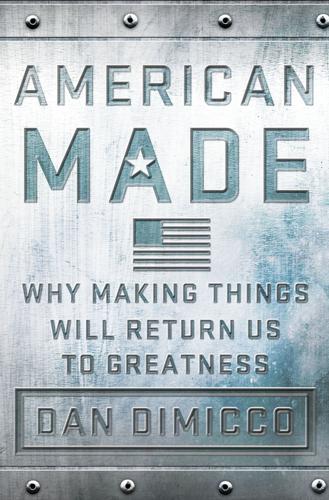
American Made: Why Making Things Will Return Us to Greatness
by
Dan Dimicco
Published 3 Mar 2015
A recent documentary called Gasland shows fire coming out of people’s kitchen faucets in towns near gas wells, and argues that fracking pollutes groundwater and allegedly causes other harms. Meantime, government regulators are devising ways to make natural gas more difficult to extract. And now opportunistic politicians are lining up against hydraulic fracturing—aka fracking—which has been around for decades and is perfectly safe. If you want to revive U.S. manufacturing and slash the trade deficit, at a time when people are becoming disenchanted with doing business in China, and at a time when Europe is wrestling with a major economic meltdown, then you really can’t go wrong with stepping up natural gas production and using it to reinvigorate our manufacturing sector.
…
Shut down the coal-fired power plants, stop natural gas power from expanding, and force everyone to find alternative energy whether it’s feasible and affordable or not. There is no rational basis for this way of thinking. None. The campaign to kill natural gas is anti-business, anti–free enterprise, and anti–common sense. At the heart of the opposition to new sources of natural gas is the way the gas is extracted. The process is called hydraulic fracturing, but it’s better known as fracking. It involves injecting water, sand, and other chemicals into shale under extremely high pressure to release the gas trapped inside. Fracking is a nonissue, or it should be, anyway. People have been fracking forever—since the late 1940s at least. Now that it has become more widespread and gained a higher profile, activists are trying to make an issue out of it.
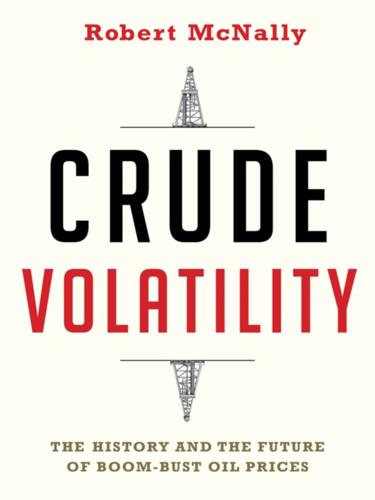
Crude Volatility: The History and the Future of Boom-Bust Oil Prices
by
Robert McNally
Published 17 Jan 2017
In the 1980s, geologists employed by Mitchell noticed that when sinking deep wells through shale rock, geological instruments registered large amounts of natural gas. Shale—“a fine-grained sedimentary rock formed by the compaction of silt and clay-size mineral particles”35—was long known to hold oil and gas, but no one knew how to get it out. Mitchell came up with the idea of trying to get at the gas using hydraulic fracturing or “fracking.” Fracking essentially entailed shattering rock to liberate gas or oil molecule trapped inside, and had been used widely since the earliest days of the oil industry. A rudimentary form of fracking was used after the Civil War by drillers who dropped explosive “torpedoes” into wells to shatter rock and accelerate oil flow, and the technology was further developed with the support of the federal government amid fears of shortages during the oil and gas boom in the early 1970s.
…
And when stimulation is exhausted, a final step is called enhanced oil recovery or EOR. The EOR techniques include pumping acids into the reservoir to create fissures in the rock through which oil can flow or heating up the oil by injecting hot water or steam into the rock. Another, related EOR technique is hydraulic fracturing. By pulling oil out of a well with artificial means, pushing it out through stimulation, and finally blasting, heating, or acidifying the reservoir, producers can sustain oil flow from a field for many years or decades, extending the plateau and allowing for a gradual decline.42 But in the case of shale oil wells, drillers go right to the EOR stage.
…
See Texas-plus pricing Gulf War, 226; Saudi Arabia’s role in OPEC after, 159; SPR and, 157–58, 185 gushers: Black Giant discovery as, 72–75, 76, 85, 107, 201; Spindletop, 33, 201; in Texas and Oklahoma, 67 Hamilton, James, 109, 184, 251n5, 252n10 hedging, 182, 191–92, 240 Higgins, Pattillo, 33 horizontal integration, 65–66, 253n30 “hot” oil, 75–78, 79 Hubbert, Marion King, 178–80, 271n34 Hussein, Saddam, 157, 215 hydraulic fracturing. See fracking Ibn Saud (king), 88, 116 Ickes, Harold, 77, 92 IEA. See International Energy Agency Illinois, 83–84 IMF, 184, 209, 236 imports, oil, 267n28; from Middle East, 96; national security and reliance on, 102; quotas on, 102, 128, 259n139; TRC and, 101–2; U.S., from 1945–1955, 96 import tariffs, 84–85; investigation of Seven Sisters, 101; Reagan’s consideration of, 153; variable, 237–38, 267n29 incorporation laws, 35 independent producers, 124; global market access of, 96, 102–3; Suez Crisis and, 98–99; TRC protecting, 81, 99; in Venezuela, 96, 102 Independent Producers League, 47 India, 239; energy intensity in, 243n6; kerosene price war in, 86 infrastructure, 275n22; for fracking, 202, 204; investment in, 57, 115, 174; specialized nature of, 62 innovation: in drilling/boring, 44, 248n7; in oil market volatility, 224; in oil/petroleum usage, 41–42; of Rockefeller, 247n106 integration, 65–66, 253n30 internal combustion engine, 41–42 International Energy Agency (IEA), 240, 264n55; forecasting of, 6, 7, 61, 171, 180, 184, 205–6, 206, 228; forming of, 135–36; oil spike in late 1990s and, 161; on shale production, 204; SPR coordination within, 239; on SPR release, 186, 201 International Petroleum Commission, 94 International Petroleum Exchange (IPE), 267n40 inventions: of drilling/boring, 13; fracking, 201–2; for production, 33 investments: downstream, 215, 239, 268n46; in infrastructure, 57, 115, 174; Saudi Aramco, since 2011, 230, 231–32, 277n78; in shale production, 217; upstream, 174, 228, 240 IPE.
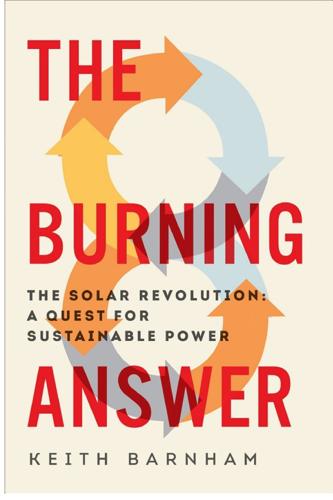
The Burning Answer: The Solar Revolution: A Quest for Sustainable Power
by
Keith Barnham
Published 7 May 2015
But I am not aware the Royal Society has ever called for a national solar cell laboratory to be established, let alone ‘fully commissioned’. Given these experiences, it was with some trepidation that I approached the joint report of the Royal Society and the Royal Academy of Engineering in 2011, ‘Shale gas extraction in the UK: a review of hydraulic fracturing’. This was a report about the risks associated with ‘fracking’ for methane, the villain we met earlier and the main component of natural gas. Fracking is a contentious issue in the UK and US, but the French government appears set against it. Sadly, in this case too, I have concerns about the report.
…
Sadly, in this case too, I have concerns about the report. The two societies conclude that the extraction of shale gas ‘can be managed effectively in the UK as long as operational best practices are implemented and enforced through regulation’. The societies had been asked by the government to consider ‘What are the major risks associated with hydraulic fracturing as a means to extract shale gas in the UK, including geological risks, such as seismicity, and environmental risks, such as groundwater contamination?’ In my opinion an even more important environmental risk than groundwater contamination is the impact of fracking on global warming. A number of relevant authorities support the view of the International Energy Agency that ‘No more than one-third of proven reserves of fossil fuels can be consumed prior to 2050’ if the world is to avoid a two degree temperature rise.
…
Frank von Hippel, Rodney Ewing, Richard Garwin and Alison Macfarlane, ‘Time to bury plutonium’, Nature, 485, 167 (2012). 25. Geoffrey Lean, ‘Minister admits total failure of Sellafield MOX plant’, Independent, 9 March 2008. 26. The Royal Society and the Royal Academy of Engineering, ‘Shale gas extraction in the UK: A review of hydraulic fracturing’, DES2597, June 2012, http://royalsociety.org/policy/projects/shale-gas-extraction/, accessed 19 January 2014. 27. International Energy Agency, ‘World Energy Outlook 2012, Executive Summary’ (2012), http://www.iea.org/publications/freepublications/publication/English.pdf, accessed 19 January 2014. 28.

Apocalypse Never: Why Environmental Alarmism Hurts Us All
by
Michael Shellenberger
Published 28 Jun 2020
The Gasland Deception In spring 2010, a documentary filmmaker released the trailer to his new film, Gasland, about the natural gas boom in the United States. The background music, similar to what we hear in trailers for horror-fantasy movies, grows in volume and speed. We hear people say that hydraulic fracturing, or fracking, of shale, an underground rock formation, is poisoning their water and causing neurological diseases and brain lesions. It shows documents describing lung disease and cancer. Three-quarters into the trailer, we hear an ominous chorus typical of what you might expect to hear when dragons take flight.
…
See also Beef cattle; Chicken production Forced displacement, 74 Ford, Henry, 101, 233 Ford River Rouge Complex, 101 Foreign Affairs, 187–88, 238 Foreign Policy, 258 Forest cover, 32–33 Forest Service, U.S. (USFS), 20 Fossil fuels. See also Coal use; Natural gas cap-and-trade, 205, 219, 258, 259 climate denial funding, 200–202, 204, 206 Congo’s need for, 81–83 energy density, 100, 102, 192 Fossil plastics, 60–61 Fracking (hydraulic fracturing), 117–20, 123, 124 France forests, 32 free trade, 41 nuclear energy, 146, 151–52, 169–70, 184, 344n renewable energy, 181, 184 Franzen, Jonathan, 197 Free-range farming, 130–31 “French paradox,” 140 Friedman, Benjamin, 95 Friends of the Earth (FOE), 163, 205 Fry, Stephen, ix Fugazi, 135 Fukushima Daiichi nuclear disaster, 145, 147, 150, 168–69 Gaddis, John Lewis, 172–73 Game of Thrones (TV show), 200 Gasland (film), 116–18 Geesman, John, 217 Geldof, Bob, ix General Electric (GE), 114 Geological Survey, U.S.
…
(USGS), 5 George, Henry, 235 Georgetown University, 174 Germany forests, 32, 42 nuclear energy, 146, 151, 283, 344n recycling, 49, 60–61 renewable energy, 151–52, 178, 180, 183–85, 191–92, 195, 198, 228 Getty Oil, 212 Glass bottles, 60 Global Environmental Change, 4–5 Global Exchange, 87, 163 Godwin, William, 229–30, 231 Goldsmith, Ernest, 216–17 Good Calories, Bad Calories (Taubes), 132–33 Google, 217, 222 Gore, Al, Jr., 214, 217, 223, 243 Gore, Al, Sr., 213–14 Gorillas, 68–70, 72–75, 76, 79, 281–82, 395n Goulding, Ellie, ix Gourmet (magazine), 132 Government Accountability Office (GAO), 218 Grandin, Temple, 134, 136–37, 138, 144 Grand Inga Dam, 70–71, 84, 245–46, 276, 386n Grass-fed cattle, 130–31 Great African War, 7 Great Ape Program, 74, 77 Great Escape, 92–95 Great Pacific Garbage Patch, 48 Greenhouse gas emissions, 2, 21, 24, 43, 60–61, 128, 130, 193, 253–54 “Greening,” 32–33 Green New Deal, 3–5, 154, 176, 187, 217, 267 Green Nuclear Deal, 278 Greenpeace, 86, 108, 113, 163, 226, 248 Greenpeace Brazil, 31–32, 38–41 Green utopianism, 267 Grijalva, Raúl, 257–59 Habitat conservation, 68 Haidt, Jonathan, 264 Haiti, 15 Hall, Craig, 202 Hallam, Roger, 10, 11, 22 Halliburton, 205, 219 H&M, 85, 102, 105 Hanno the Navigator, 72 “Hansel and Gretel,” 37 Hansen, James, 181 Hardin, Garrett, 236–37 Harris, Kamala, 216 Harvard University, 93–96, 104, 139, 225, 250, 252, 261 Hawksbill sea turtles, 52–53 Heal, Geoffrey, 88 Heart disease, 132–33 Heartland Institute, 206 Heidegger, Martin, 187 Heritage Foundation, 206 Hetch Hetchy Project, 386n High-fat diets, 131–33, 140 High-yield farming, 6, 91–92 Hillary, Edmund, 155 Hinkley Point C Nuclear Plant, 146 Hitler, Adolf, 233 Hohenkammer Statement, 13–14 Holdren, John, 239–40, 242, 243, 258 Hole in the World, A (Rhodes), 269–70 Hollywood, 2, 7, 27, 162, 164, 165, 222 Homosexuality, 95 Hoover Dam, 84 Höppe, Peter, 13 Human evolution, 133–34 Human-wildlife conflicts, 17–18, 74–75 Hunter-gatherers, 36–37, 134 Hurricane Katrina, 14 Hurricanes, 14–15 Hurricane Sandy, 16 Hyatt, John Wesley, 54, 55 Hydraulic fracturing (fracking), 117–20, 123, 124 Hydroelectricity, 177, 179–80, 228–29, 238 in Congo, 70–71, 82, 83–84, 245–46, 276 power density and, 100, 102–3, 191–92, 386n Hydrogenation, 112 Hypocrisy, 201–4, 222–24, 246–47 Ice sheets, 2, 3, 25, 262 I’ll Take My Stand (Ransom), 234 Impossible Burger, 135 Inconvenient Truth, An (documentary), 217 India author’s visit, 247–49 population control, 235–36, 237 sustainable development in, 247–49 India Great Famine of 1876–1878, 232 Indian Ocean tsunami of 2004, 15 Indian Point Nuclear Power Plant, 284 India-Pakistan relations, 173 Indonesia, 88–89, 92–93, 96–97, 277 Indonesia oil, 211–12 Industrial Revolution, 95–96, 227 Infrastructure, 64, 225–26, 247 power of electricity, 226–29 Inga dam, 70–71, 84, 245–46, 276, 386n Insect die-off, 195–96 Institute of Engineering Thermodynamics, 195 Intensive farming, 38, 39, 42–43, 130–31, 135–36, 139 InterAcademy Council, 255–56 Intergovernmental Panel on Climate Change (IPCC), 114, 284–85 Intergovernmental Panel on Climate Change (IPCC) reports, xiii, 1–6, 10, 11–12, 14, 15–16, 23, 30, 126–27, 128, 244, 252, 253–57 Intergovernmental Science-Policy Platform on Biodiversity and Ecosystem Services (IPBES), 65–66, 67, 79 International Energy Agency (IEA), 26 International Institute for Applied Systems Analysis (IIASA), 114–15, 252 International Rivers, 245–46 International Union for Conservation of Nature (IUCN), 57, 59, 67, 76 International Whaling Commission (IWC), 113 Inuits, 109 “Invasive species,” 66 Invenergy, 207 IPCC.
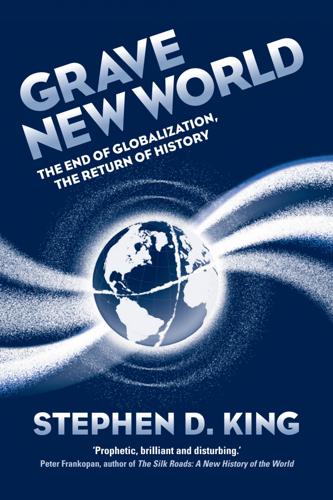
Grave New World: The End of Globalization, the Return of History
by
Stephen D. King
Published 22 May 2017
The ‘pivot to Asia’ under Barack Obama reflected these new realities. Yet there was – and is – an opportunity cost. With more resources devoted to Asia, fewer could be deployed elsewhere. Doubtless, US thinking was heavily influenced by the shale energy revolution. Thanks to new technologies associated with hydraulic fracturing – alongside horizontal drilling – the US was no longer so dependent on Middle Eastern oil and gas. Why, therefore, spend so much time and trouble investing in a region that for much of the post-war period had only been a thorn in America’s side? Given America’s shrinking share of the global economy, however, it followed that the decision to devote more of its – limited – resources to the Pacific risked an increase in power ‘vacuums’ elsewhere in the world.
…
(i) Hall of Mirrors (Versailles) (i) Hamas (i) Han Chinese (i) see also China Hangzhou (i) Hausas (i) Hawaii (i) Hayek, Friedrich (i), (ii) HBOS (i) Healey, Denis (i), (ii) Hearst, William Randolph (i) Heath, Edward (i) Hegel, Georg Wilhelm Friedrich (i) Heineken (i) Henry VIII, King (i), (ii), (iii) Himalayas (i) Hindus (i) Hitler, Adolf (i) HIV (i) Hobbes, Thomas (i), (ii), (iii) Hofstadter, Richard (i) Holy Roman Empire (i) Honduras (i) Hong Kong (i), (ii), (iii), (iv), (v), (vi) House Committee on Oversight and Government Reform (US) (i) House of Debt (Atif Mian and Amir Sufi) (i) hukou system (i) Hundred Years’ War (i) Hungary (i), (ii), (iii) Husayn (son of Ali) (i) Hussein, Saddam (i), (ii), (iii) Huxley, Aldous (i) hydraulic fracturing (i) hyperinflation (i) see also inflation Iberian Peninsula (i) Iceland (i) IMF see International Monetary Fund immigration (i) 19th century (i) 20th century (first half) (i) 20th century (second half)–21st century (i) Africa (i), (ii) Commonwealth citizens in UK (i) German Gastarbeiter (i) Hispanics in US (i) Irish potato famine (i) key drivers for (i), (ii) opposition to in UK (i), (ii) Schengen and (i) Syria (i) Immigration Act 1917 (i) Immigration and Naturalization Act 1965 (i) Imperial Preference (i), (ii) India British in (i) bureaucracy (i) China and (i) economic resurgence (i), (ii), (iii), (iv) glacial melt threat (i) immigration into Britain (i) Islam spreads to (i) living standards (i) population statistics (i) SCO and (i) steel and textiles (i) Indian Ocean (i), (ii) Indochina (i) Indonesia (i), (ii), (iii) Industrial Revolution (i), (ii), (iii), (iv) industrialization (i) IMF and (i) India loses out (i) Lewis Model on (i) Russia (i), (ii) inequality (i) infant mortality (i), (ii) inflation a bad thing?

No Ordinary Disruption: The Four Global Forces Breaking All the Trends
by
Richard Dobbs
and
James Manyika
Published 12 May 2015
Smart materials and memory metals (which can revert to their original shapes) are finding applications in a range of industries such as aerospace, pharmaceuticals, and electronics. The period between historic breakthroughs has been decreasing dramatically 2.Rethinking energy comes of age. In North America, fracking—a combination of horizontal drilling and hydraulic fracturing—has unleashed a shale energy boom that few saw coming. In less than a decade, the price of natural gas has fallen from more than $12 per unit (million British thermal units) to around $4 to $5 per unit in the United States. And as gas supply outstrips demand and prices remain low, producers are turning to fracking for oil in formations like North Dakota’s Bakken Shale.
…
Time and again in the twentieth century, technology played a vital role in overcoming logistical and geological difficulties. Today, three major areas of innovation in energy could transform the supply picture over the coming decade: oil and gas technologies, renewable energy, and advanced battery technology. In oil and gas, hydraulic fracturing, or fracking, and horizontal drilling have enabled the large-scale extraction of gas and oil from shale rock and are already making a difference in global markets. Although fracking is controversial on environmental grounds, there is no doubting its extraordinary impact. In the United States, where natural gas production soared 25 percent between 2000 and 2013, winter gas prices have halved since 2008.53 Driven by new technology, as we’ve noted earlier, the United States in 2013 surpassed Russia as the world’s largest producer of hydrocarbons, and by 2020, it could become the world’s largest producer of oil, according to the International Energy Agency.54 In addition to improving cost and access to new oil reserves, government efforts on researching and developing technology have also contributed to dramatic improvement in recovery rates of existing reserves.

Climate Change
by
Joseph Romm
Published 3 Dec 2015
White, who ran the US Energy Department’s carbon sequestration group until 2005 and served as an adviser until earlier this year. ‘Red flags should be going up everywhere when you talk about this amount of liquid being put underground’.” With the use of hydraulic fracturing to produce natural gas in the United States, we have seen considerable concern about leakage of methane and other potentially harmful substances. There is a growing body of research linking hydraulic fracturing to earthquakes. That has been especially true for the so-called reinjection wells, where millions of gallons of wastewater from the fracturing process are injected deep underground, much as the carbon dioxide would be in CCS.
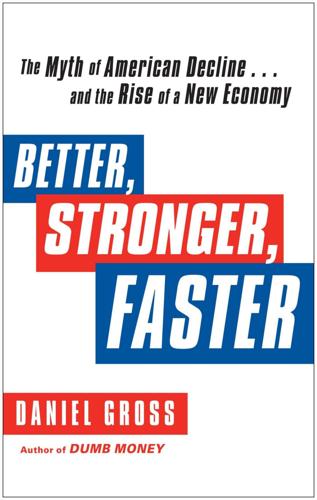
Better, Stronger, Faster: The Myth of American Decline . . . And the Rise of a New Economy
by
Daniel Gross
Published 7 May 2012
Oil production peaked at about 150,000 barrels per day in the late 1970s, and in 2001 it fell to a relative trickle of 85,000 barrels per day. But starting in the middle of the 2000s, new techniques were brought to bear in the Bakken Shale, the stratum of rock that lies under about 15,000 square miles of scrubland in the western part of the state. It turned out that hydraulic fracturing, or fracking—the technique first developed in the Barnett Shale in Texas, in which massive water pressure is applied to liberate natural gas from rock—can also be used to liberate liquid oil. In recent years drillers have also perfected horizontal drilling techniques, delving up to two miles deep and then two miles across—an efficient means of exploring vast stretches of territory.
…
.: BMW in, 87, 97 GE in, 109–10, 174, 228 gross domestic product (GDP), 9, 17, 29, 31, 75, 198, 227 of BRIC nations, 19–20 and costs of bailouts, 38, 43 exports and, 98–99 in history, 13–14 Groupon, 203 Grupo Phoenix, 88–92 Gyourko, Joseph, 212 Hagerty, James, 108 Hamilton, Alexander, 218 Hanjour, Hani Hasan, 120 Hassett, Kevin, 18 Hawaii, 117–18, 123–25, 211 Hawaii Volcanoes National Park, 207 health care, 70, 91, 145–46, 172, 216–17, 225 exports and, 116, 125–26 inports and, 136, 145 North Dakota and, 157, 160, 162 Obama on, 5–6, 222 Healy, Tim, 72–74 hedge funds, 16, 19, 82, 85, 94, 156 timely policy decisions and, 36, 38 Helliker, Kevin, 161–62 higher education, 142, 175, 204, 215, 226 efficient consumers and, 192–95 export of, 115–21, 126, 131, 161–62, 164 inports and, 145–46 North Dakota and, 153, 160–62 tuition charges in, 118–20, 126, 146, 161 High Line, 121, 213, 225 Hildestad, Terry, 153 Hill Holliday, 50 Hoffman, Reid, 203–4 Holmes, Elizabeth, 125 HomeAway, 203 home equity lines of credit, 51, 54–56 Hong Kong, 7, 22, 92, 120, 138 Hoover Dam, 206 Hot Properties, 171 houses, housing, 12, 56, 74, 116, 180, 225 booms in, 9, 21, 54, 156, 171, 194 bubbles in, 15, 51, 54–55, 190, 219 in China, 7, 20 crises in, 4, 81, 190–91, 212, 219–20 efficiency economy and, 61, 224 efficient consumers and, 185–91, 194–96 exports and, 111–13 FDI and, 83–85 forecasts and, 16–18 infrastructure and, 211–13 in North Dakota, 150–52, 155–56, 158 prices of, 3, 9, 16–17, 24, 29, 54, 84, 150, 155–56, 211–12, 219 renting rooms in, 194–95 restructuring and, 53–55 strengthening recovery and, 215–17, 220–21 timely policy decisions and, 29, 32, 34–35, 42–43, 54–55 see also mortgages Howard, Tim, 126 “How the Great Recession Was Brought to an End” (Zandi and Blinder), 31 Huawei, 96 Hudson River, 206, 211, 225–26 hydraulic fracturing, 79, 86, 105, 151 Hy-Lite, 169 Hyman, Jennifer, 194 Hyundais, 77–78 IBM, 82, 133, 143, 199 Immelt, Jeff, 146 exports and, 109–10 and reshoring and insourcing, 172–73 immigrants, immigration, 21, 89, 91, 165, 182, 215 Erie Canal and, 205–6 exports and, 117, 121, 123 and reshoring and insourcing, 176–77 InBev, 95 incomes, 9, 16, 37, 72, 98, 111, 156, 168, 222 in China, 20, 164–67 efficient consumers and, 180–84 exports and, 101, 116, 118, 126, 164 FDI and, 83, 91 infrastructure and, 205–7, 209–10 inports and, 139–40 North Dakota and, 152, 160 and reshoring and insourcing, 169–70, 172, 178 restructuring and, 54, 56–57 supersizing and, 200–201 India, 19, 26, 100–101, 112, 125, 161, 164, 171–72 exports and, 106, 108–9, 117–18, 120–22, 127, 169 FDI and, 86–87, 94 inports and, 131–32, 138, 227 Indian Point nuclear power plant, 74 IndiGo, 108 Industrial and Commercial Bank of China (ICBC), 92–93 inflation, 9, 15, 20, 24, 165, 170 infrastructure, 13, 101, 137, 169, 207, 217, 224–25, 228 efficiency economy and, 79, 224 exports and, 103–4, 106, 113, 123, 208 North Dakota and, 150, 152–53, 157, 162 supersizing and, 202–14 initial public offerings (IPOs), 7, 35, 42, 68, 133, 201, 204 inports, 131–47 in auto industry, 133–37, 227 China and, 134–36, 138–43, 146, 164, 227 Disney and, 132, 137–38, 144 employment and, 132, 134–36, 140, 142, 146–47 health care and, 136, 145 higher education and, 145–46 Mary Kay and, 132, 141–43 Starbucks and, 139–41 supersizing and, 202–3 insourcing, see reshoring and insourcing Institute of International Education, 118–19 interest, interest rates, 10, 85, 217, 221 of Japan, 29–30 restructuring and, 48, 57, 136 timely policy decisions and, 34, 37–38, 42 International Trade Administration, 226 Internet, 10, 18, 26, 46, 84, 168, 180, 225 efficient consumers and, 183, 193–95 stocks and, 15, 21–22, 82 supersizing and, 200–201, 203, 208–10, 214 interstate highway system, 207 inventories, 9, 18, 155, 167, 170, 177, 194, 220 inports and, 135, 142 investors, investing, 1, 13, 16, 24, 32, 107, 133, 163, 199, 217, 219, 222, 226 automaker bailouts and, 41–42 economic declines and, 4, 17 efficiency economy and, 62, 65, 71–73, 76, 78–79, 224 efficient consumers and, 181, 184–85, 195–96 infrastructure and, 205, 207–8, 210–13 inports and, 131, 136–38 North Dakota and, 150–51, 157, 160–62 and reshoring and insourcing, 170, 173–74, 179 restructuring and, 44–45, 49–51, 78 strengthening recovery and, 215, 220 supersizing and, 200, 213 timely policy decisions and, 30, 36–38, 41–42 see also foreign direct investment iPads, 140, 193, 200 iPhones, 64, 140, 189, 198, 200, 204, 227 Iran, 227 Iraq, 110 Ireland, 38 Isaacson, Walter, 128, 200–201 Israel, 84, 123, 197, 211, 231 Italy, 14, 19, 29, 46–47, 71, 87, 106, 123, 133, 203 ITU, 209 iTunes, 184, 200, 210 Japan, 47, 140, 165, 168 automakers and, 14, 26, 41, 79, 87, 134–35, 173 comparisons between U.S. and, 8–9, 19, 21, 29, 202 demographics of, 8–9, 21, 29, 162 efficiency economy and, 60–61, 67 exports and, 101, 106, 109, 124–25, 128 FDI of, 82, 92–93, 95–96 in history, 13–14, 20, 61 inports and, 138, 144 timely decisions and, 29–30, 37 tsunami in, 21, 41, 124, 167 Jarden, 169–71 JBS, 95 Jobs, Steve, 128, 199–202 John F.
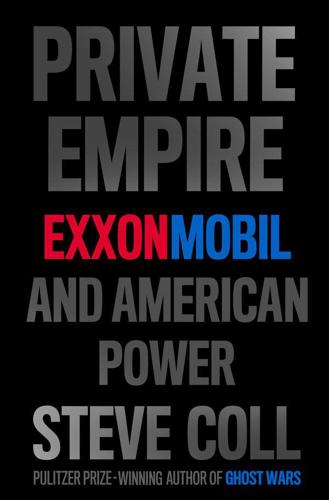
Private Empire: ExxonMobil and American Power
by
Steve Coll
Published 30 Apr 2012
When Randall arrived on August 6, he explained that Bob Simpson was thinking about a “strategic combination” between XTO and ExxonMobil. Might ExxonMobil be interested? “Yes, I think we’ll be interested,” Tillerson answered. “Let me take some time to soak on it.”5 In 1976, as a young Exxon engineer on his second assignment, in East Texas, Rex Tillerson was asked to work on a drilling technique known as hydraulic fracturing, which employs pressurized fluids to shatter rocks and unlock natural gas buried in complex geological formations. The drilling and engineering problems he wrestled with anticipated the shale gas boom that undergirded XTO’s success. In part because of his early, direct experience, Tillerson felt he understood the unconventional gas business.
…
(Armed Forces for a Federal Republic), 167 Fariello, Theresa, xiii, 342–43, 507, 548–50 Farmer, Mike, 107–10, 405 Federal Bureau of Investigation (F.B.I.), 26–27, 28 Feinstein, Dianne, 486 Feith, Douglas, xiv, 227, 231, 234, 241, 242, 243, 245 global vision on oil, 237–40, 246 Senate testimony of, 227–28 Field of Dreams (film), 525 Fifteenth World Petroleum Congress, 81 Finance Ministry, Iraqi, 564 financial crisis of 2008, 540, 541, 578 Finestone, Paul, 528 Finestone Insurance Agency, 528 Finkel, Louis, 343 Flannery, Brian, xiii, 79, 84, 183, 555 Flatt, Shawn, 424 Fleytas, Andrea, 602–3 Fluor Corporation, 235 Foley, Thomas, 232–33 Foltz, William, 171 Ford, Gerald, 237 Ford Motor Company, 85, 539 Foreign Agricultural Service, 154 Foreign Corrupt Practices Act (F.C.P.A.), 109, 142, 298–99 Foreign Office, British, 459 Forsythe, Rosemarie, xiii, 160–62, 163, 255, 419, 442, 463 Fortune, 33, 316, 645n F.P.S.O. (offshore production vessels), 469–70 fracking. See hydraulic fracturing France, 19, 141, 155, 261, 297, 357, 455, 512, 513, 620 Franco, Francisco, 137, 285 Franklin, Rob, 574, 575 Franks, Tommy, 227–28 Frazer, Jendayi, 468, 469 Free Aceh Movement, see G.A.M. FreedomCAR and Fuel Partnership, 437, 444 Freedom House, 344 Freedom of Information Act, 131, 133–34, 135–36, 183, 459 Freeman, Bennett, 223, 504–7, 538 Freeport-McMoRan Copper & Gold, 102 Freudenberg, William, 312–13 Friedberg, Aaron, 243–44 Friedman, Thomas, 240 Front Uni Pour le Changement (United Front for Change), 357, 363 Fryszman, Agnieszka, 405–7 Fuller, Lawrence, 60 Future 500, 537 Future of Iraq Project, 232 “Future Policy Issues Concerning the Ministry of Oil” (Carroll), 236 Gabon, 141, 150 Gaddafi, Muammar, 97, 159, 531 Galante, Edward G., xiii, 210, 211–12, 314, 315–17, 332, 338 Galbraith, John Kenneth, 570 Galbraith, Peter, 570 G.A.M.
…
Bush on, 89, 90 see also climate change Global Witness, 169 Gold, Russell, 587 Goldman Sachs, 554 Goldthwait, Christopher, xiv, 154–55, 157, 169, 170–71, 175, 359–60, 638n Goldwyn, David, 531 Golubev, Yuri, 269 Goodwin, Rockefeller, 40 GoodWorks International, 370 Google, 20, 551 Gorbachev, Mikhail, 13, 252, 255, 260 Gordon, Bart, 343 Gordon, Douglas, 241–42 Gore, Al, 68, 89, 181, 337–38, 339, 535–36, 635n Gorton, Slade, 15 Grameen Bank, 554 Grasso, Richard, 272 Gravity Magnetics Group, 158 Great Britain, 51, 58, 61, 85, 197, 200, 220, 231, 244, 261, 282, 286, 293, 455, 619 ExxonMobil operations in, 224 Great Depression, 540 Greco, John, 390 greenhouse effect, 88, 91, 301, 310, 500, 580, 585, 596 cap-and-trade debate and, 539, 547 ExxonMobil’s opposition to regulation of, 180–81, 336, 347–48, 479 natural process of, 77–78 Obama’s energy policy and, 543–44, 545–46, 547 Raymond’s Beijing speech on, 81–84 Rio Summit and, 80–81 see also climate change; global warming Greenpeace, 26, 34, 85, 181, 336, 536 ExxonMobil as targeted by, 182–88 ExxonMobil protest raid of, 186–88 internal culture of, 182 oil companies targeted by, 181–82 Greenspan, Alan, 200–201, 581, 586 Gref, German, 254, 277 Grumet, Jason, 498 GSAAuctions.gov, 288 Guatemala, 519 Gulf War of 1991, 228, 229, 511 Guyer, Jane, 165 Guzinsky, Vladimir, 271 Habré, Hissène, 155, 158–59 Hadley, Stephen, 239, 241, 252 Hagel, Chuck, 301–2 Hagen, Pete, 133 Haggar, Ali Abdel-Rhamane, 171 Haifa pipeline, 233–35 Haines, Robert, 72, 108, 113, 220, 342, 403, 563 Halliburton, 52, 67–68, 70, 145, 162, 235, 244, 373–74, 461–62, 567, 573, 602, 613 Halperin, Mark, 487 Hand, Henry, 145–46 Hansen, James, 78, 80, 90 Harper, Stephen, 545 Harris, John F., 487 Harrison, Otto, xiii, 14–15 Hart Research Associates, 554 Harvard Center for Risk Analysis, 481 Hassett, Kevin, 536 Hawrami, Ashti, 567 Hayward, Tony, 612 Hazelwood, Joseph, Jr., xv, 4–6, 634n Health and Human Services Department, U.S., 381 Heartland Institute, 86, 340, 345 Heimbold, Charles, 91 Heintz, Ron, 128 Henry, Jamie Lee, 334 Henry, Simon, 590 Henry Dunant Centre, 115 Heritage Foundation, 184, 232, 565 Heritage Mobil stations, 372 Hess Corporation, 514–15, 520, 529, 571 see also Amerada Hess Hewlett-Packard, 80 Hickel, Walter, 605 Hill, Christopher, 558 Hinchey, Maurice, 500 Hissène, Mahamat, 358, 367, 370 History of the Standard Oil Company, The (Tarbell), 35 Hitchcock, Liz, 487, 491 Hochstein, Amos, 292, 295, 297 Houghton, James R., 315 House of Representatives, Nigerian, 466 House of Representatives, U.S., 73, 342, 343, 496, 617, 650n Energy and Commerce Committee of, 488, 489–90, 494, 551 Science and Technology Committee of, 343 toy safety bill in, 486 Waxman-Markey bill in, 552 Hoyt, Max, 488 Hubbard, Allan, 303–4 Hubble, Henry, 493–94 human rights, 170, 504, 510 Aceh war and, 101–5, 107, 110–11, 114, 118, 120, 396–98, 400 Equatorial Guinea and, 142–43, 145, 146–48, 150–51, 152–53, 296–97, 511–13, 516, 521, 529, 531–33 ExxonMobil and, 220–23, 404–5, 521 Human Rights Watch, 106, 152, 220–21, 222, 405, 531–32 Humble Oil and Refining, 3, 36, 61, 77, 608 Humphreys, Donald, 493 Hungary, 17, 587 Hunt, Hunter L., 569 Hunt, Ray L., 569–70 Hunt Oil, 568–71, 622 Hurricane Katrina, 319 Hurricane Rita, 319 Hurtt, Adrienne, 45 Hushka, Leslie, 481 Hussein, Saddam, 59, 227, 228, 230, 232, 360, 440, 558, 561, 564, 574 Hutchison, Kay Bailey, 335 Hutto, F. Chase,, III, 304–5 Hutton, Keith, 589 hydraulic fracturing, 580–81 hydrocarbons, classes of, 127 hydrogen, 437, 444–45 I.B.M., 19, 318 Ibrahim, Khalil, 357 Ijaw Patriotic Front, 456 Immelt, Jeffrey, 180 Immigration and Customs Enforcement, U.S., 526 Imperial Oil, 544 Inconvenient Truth, An (film), 337 India, 224, 257, 303, 310, 324, 415, 420, 422, 440, 457, 512, 559, 618, 620 Indonesia, 20, 59, 62, 93–94, 95, 99–100, 102, 104, 107, 112–13, 114–15, 116, 197, 232, 351, 352, 364, 415, 419, 636n John Doe lawsuit and, 120, 399–406, 621 2004 tsunami in, 402–7 see also Aceh war Indonesian National Army, see T.N.I.

Soonish: Ten Emerging Technologies That'll Improve And/or Ruin Everything
by
Kelly Weinersmith
and
Zach Weinersmith
Published 16 Oct 2017
And in any case, they hadn’t produced much of use. Their biggest development was liberated natural gas, but companies weren’t too keen on trying to market gas that’s only a teensy bit more radioactive than average. Moreover, in what has to be one of the more ironic turns in all of history, the invention of hydraulic fracturing (“fracking”) midcentury undercut the idea of using atomic power to release natural gas. Tell this to your environmentalist friend if you want to break her brain. Adding to the irony, the ever-more-expensive war in Vietnam made funding less available to nuclear tests for fun and profit. So yeah, you may have been spared from a more radioactive world thanks to . . . fracking and Vietnam.
…
P., 331 Harvard Medical School, 204, 242 Harvard-Smithsonian Center for Astrophysics, 65 Harvard University, 129–30, 150, 203, 208, 247 Hausbaumaschine, 135 Hayabusa, 65 Hayabusa 2, 65 health care costs, 231 health insurance, 250 hearing, restoring of, 307 heart disease, 246–48 “heat,” 5 Heath, Robert, 310 “heavy water,” 81 hedgehog grease, 229 Heilig, Morton, 168 helium, 4, 5, 74–75, 76, 91 “High Flight” (Magee), 13 hippocampal prosthesis, 307–8 Hiroshima, 67 Hobbit, The (films), 82 Holocaust, 183 Holocaust Museum, 183 Homeland Security Department, U.S., 81 homosexuality, 310 house-building factory, 135 houses: programmable, 126 reconfigurable, 109–11 housing, 134–37, 157 complexity of, 137 inspection of, 145–46 Howard Hughes Medical Institute, 212 Hull, Richard, 80, 82, 84, 92 human genome, 214, 234–35 Human Genome Project, 220 Human Metabolome Database, 244 Huntington’s disease, 196n, 237 Hussein, Saddam, 48, 49 hydraulic fracturing (“fracking”), 99 “Hydrocolloid Printing: A Novel Platform for Customized Food Production” (2009 paper), 162 hydrogen, 4, 73–76, 78, 79, 94, 208–9 hydrogen bombs, 98, 100 hydrogen sulfide, 327 HygroScope, 104 hypertension, 246 hypocholesterolemia, 246 hypothalamus, 189 Hypurin, 198n Ice Age, 223 iGEM (International Genetically Engineered Machine), 216 IKEA, 129, 137 Illinois, University of: at Urbana-Champaign, 182 Veterinary School at, 184 Illusio, 185 immune system, 207, 238, 241–42 organ transplants and, 258–59 immunosuppressive drugs, 258–59, 275 immunotherapy, 242 income distribution, 154 Industrial Revolution, 154 inertial confinement fusion, 86–87 infinite universes, 329, 330 information asymmetry, 181 Innovega, 176 Instagram, 247, 250 Institute of Advanced Architecture of Catalonia, 151 insulin, 198, 207 insurance, 250 Interactive Robogami, 108 international arms trade, 48 International Space Station, 15–16, 41, 42–43 Internet, 109, 122, 216, 262, 269 intracortical neural recording, 295–99 Iowa State University, 179 iPhone, 216 Iraq, 48, 49–50 iron, 54 irritable bowel syndrome, 206 isopropanol, 208–9 isotopes, 73–74 ITER (International Thermonuclear Experimental Reactor), 88–89, 91–94 ivacaftor, 236, 248 Japan, 136 JAXA (Japan Aerospace Exploration Agency), 65 J.

The End of Doom: Environmental Renewal in the Twenty-First Century
by
Ronald Bailey
Published 20 Jul 2015
That is the amount of electricity that the average American burns in three days and the average European consumes in five days. One reasonable threshold might be 8,000 kilowatt-hours, which is the quantity that the average Japanese citizen uses in a year. Second, activist opposition to safe hydraulic fracturing to release vast quantities of natural gas trapped in deep underground shale formations is counterproductive. Burning natural gas releases about half the carbon dioxide that burning coal does. In fact, the 2013 IPCC Physical Science report identifies power generation using natural gas as a “bridge technology” that can be deployed now.
…
See also disease biotechnology for birth control pills birth defects coffee drinking DDT creation for EMFs and endocrine disruption and false positives in female male nanotechnology for obesity and pathological science and penile deformation pesticides and pharmaceuticals and politicization of precautionary principle positioned for reproductive problems saccharin and sperm synthetic biology for Heinberg, Richard herbicides Heritage Foundation Hickey, Joseph HIV/AIDS Holdren, John homeopathy Hooker, Joseph Hopfenberg, Russell hormones, in meat and dairy. See also endocrine disrupting chemicals Howard, Ted Hubbert, M. King Hueper, Wilhelm hurricanes hydraulic fracturing hypospadias IEA. See International Energy Agency IIASA. See International Institute for Applied Systems Analysis Iler, Stuart income increase climate adaptation and climate mitigation and fertility rate decline and intergenerational equity and open-access social orders and trend overview India biotech crops in climate change negotiations with farmer suicide in fertility rate and life expectancy in Green Revolution in oil consumption patterns for Orissa cyclone Industrial Revolution industrialization commodity super-cycles and fertility rate decline and innovation trial and error in pollution correlation to Information Technology and Innovation Foundation (ITIF) Inhofe, James innovation cognitive biases against elitist resistance to fertility rate decline and free-market capitalist drive for population projections and positive possibilities with precautionary resistance to trial and error for innovation sectors and types additive manufacturing autonomous vehicles biofuel biotech crops cellular climate geoengineering DDT electric vehicle energy, clean energy efficiency food production Green Revolution lasers metal nanotechnology nuclear power oil pharmaceutical resource efficiency solar power insulin Intellectual Ventures intergenerational equity Intergovernmental Panel on Climate Change (IPCC) on climate adaptation on climate mitigation on extinction on natural disasters on natural gas efficiency on ocean acidification on temperature increase on water privatization International Energy Agency (IEA) International Food Policy Research Institute International Institute for Applied Systems Analysis (IIASA) International Monetary Fund International Union for the Conservation of Nature (IUCN) Ioannidis, John IPCC.

Radicals Chasing Utopia: Inside the Rogue Movements Trying to Change the World
by
Jamie Bartlett
Published 12 Jun 2017
A mass movement of Nimbys might sound like an oxymoron, but it’s already happening. In several Western democracies—notably the United States, Australia and the United Kingdom—there is a fast-growing crusade of people who are helping to tackle a global issue: the anti-frackers. ‘Fracking’ is shorthand for hydraulic fracturing, the process of blasting a mix of water, sand and chemicals at shale rocks hundreds of metres underground. Tiny fissures in the rocks contain trapped gas, and the process releases that gas into pipes, and on to a refinery. In the United States, where this industry is most advanced, fracking makes up roughly half of all gas extraction, has created thousands of jobs and driven down energy prices.16 It turns out the United Kingdom has potentially enormous reserves of shale gas deep underground too, and since 2008 the British government has awarded dozens of licences to companies to start exploratory drilling.
…
‘Supply and consumption of coal’, ‘Chapter Two: Solid fuels and derived gases’, in the Digest of United Kingdom Energy Statistics (DUKES), Department for Business, Energy & Industrial Strategy, https://www.gov.uk/government/statistics/solid-fuels-and-derived-gases-chapter-2-digest-of-united-kingdom-energy-statistics-dukes. 15. Astra Taylor, ‘Against activism’, Baffler 30, 2016, https://thebaffler.com/salvos/against-activism. 16. ‘Hydraulic fracturing accounts for about half of current U.S. crude oil production’, U.S. Energy Information Administration, 15 March 2016, http://www.eia.gov/todayinenergy/detail.php?id=25372; ‘Frequently asked questions: How much shale gas is produced in the United States’, Energy Information Administration, 13 February 2017, http://www.eia.gov/tools/faqs/faq.cfm?
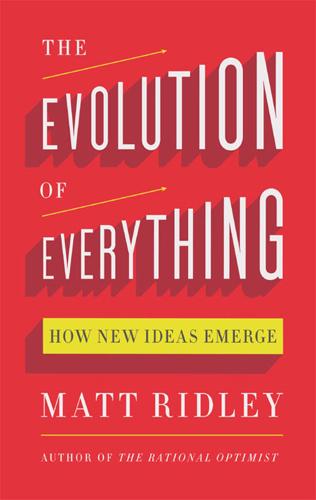
The Evolution of Everything: How New Ideas Emerge
by
Matt Ridley
An example: in recent years it has become fashionable to argue that the hydraulic fracturing technology that made the shale-gas revolution possible originated in government-sponsored research, and was handed on a plate to industry. A report by California’s Breakthrough Institute noted that microseismic imaging was developed by the federal Sandia National Laboratory, and ‘proved absolutely essential for drillers to navigate and site their boreholes’, which led Nick Steinsberger, an engineer at Mitchell Energy, to develop the technique called ‘slickwater fracking’. To find out if this was true, I spoke to one of hydraulic fracturing’s principal pioneers, Chris Wright, whose company Pinnacle Technologies reinvented fracking in the late 1990s in a way that unlocked the vast gas resources in the Barnett shale, in and around Forth Worth, Texas.
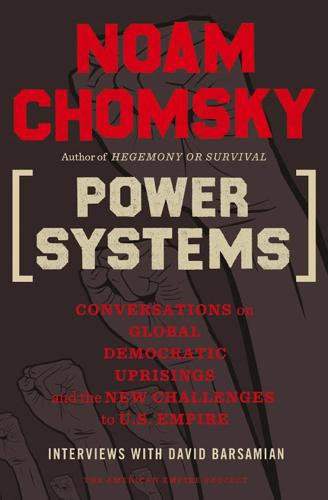
Power Systems: Conversations on Global Democratic Uprisings and the New Challenges to U.S. Empire
by
Noam Chomsky
and
David Barsamian
Published 1 Nov 2012
Canada is also one of the major centers of mining operations around the world. Conflicts over mining of natural resources are leading to wars and violence globally, from Latin America to India. Internally, India is practically at war over natural resources.11 The same is true of Colombia and other countries. What can you say about the process of hydraulic fracturing to extract natural gas, known as fracking? Fracking has local environmental ramifications that are pretty severe. It uses huge amounts of water. The process itself is destructive of the local environment in many respects, and there is considerable public opposition to it on that basis.12 But I think that we shouldn’t overlook the deeper problem.

The Best Business Writing 2013
by
Dean Starkman
Published 1 Jan 2013
When Republicans took back the House in the 2010 midterm elections, ExxonMobil’s lobbyists no longer had reason to fear that Obama or congressional Democrats could upend their industry with climate or tax laws. • • • All of ExxonMobil’s business strategies remain oriented toward the very long run. With little sign that climate legislation can be revived successfully, the most important issue during the next presidential term likely will be the regulation of hydraulic fracturing, or “fracking,” drilling for unconventional gas trapped in shale rocks and other formations, an issue that will shape the corporation’s business prospects in the United States for a generation or more. Obama and Mitt Romney, the most likely Republican nominee, disagree over oil-and-gas regulations, and this has reinforced ExxonMobil’s alignment with the Republican Party.
…
The shale formation is a layer of oil- and gas-rich rock lying thousands of feet below the rolling hills, cherry groves, and family farms of northern Michigan. It extends from beneath the dunes on Lake Michigan and Lake Huron’s shorelines to the center of the mitten-shaped state. In 2010, the region was at the forefront of America’s shale boom—a buying frenzy made possible by the innovative drilling technology known as hydraulic fracturing, or “fracking.” The technique has fueled the largest U.S. land grab since the Gold Rush of the 1850s—and Chesapeake and Encana are among the biggest players nationwide. Chesapeake’s McClendon has been the single most acquisitive buyer. In the last ten years, his company has amassed more than fifteen million acres of land in the United States—an area about the size of West Virginia.

Grand Transitions: How the Modern World Was Made
by
Vaclav Smil
Published 2 Mar 2021
We are now trying to shorten the fossil fuel era not because of any imminent concerns about running out of resources or because of unbearably high costs of their recovery and use. Not so long ago a vocal peak-oil movement forecast an imminent end of the oil era, but these were unfounded concerns. A combination of horizontal drilling and hydraulic fracturing opened oil shales, a previously unexploitable resource, to mass-scale commercial recovery and, despite increasing demand, the world has experienced problems stemming from record crude oil production (with the United States once again in the lead), saturated markets, and falling crude oil prices.
…
When we move our focus from populations to agriculture and food, there were no herbicides, no high-yielding short-stalked cereals, no transgenic crops, no no-till cropping, no central animal feeding operations, no mass-scale greenhouses growing vegetables, no cultivation under plastic sheets, and (bananas aside) no intercontinental trade in fresh fruit. When we turn to energy, there were no giant open-cast mines, no Saudi oilfields, no offshore drilling (out of the sight of land or in deep waters), no hydraulic fracturing, no liquefied natural gas, no giant oil or LNG tankers, no gigawatt-sized turbogenerators, no widely deployed gas turbines, no flue gas desulfurization, no nuclear reactors, no high-voltage direct-current lines, no PV cells, no wind turbines. Economies had to do without any computers, satellites, jetliners, container shipping, and rapid trains; there was no steel produced in basic oxygen furnaces, no plate glass made by floating on molten metal, no centrifugal compressors in ammonia synthesis, no composite materials, no solid-state electronic devices and hence no Internet, no mobile phones, no essentially instant and free flow of information.

Growth: From Microorganisms to Megacities
by
Vaclav Smil
Published 23 Sep 2019
Pre-WWII extraction of natural gas was overwhelmingly an American affair, but between 1950 and 2000 global output grew 11-fold as the Soviet Union surpassed US production and as Canada, the North Sea, Netherlands, and Australia emerged as major producers (Smil 2015b). The logistic fit of post-1870 global gas extraction has its inflection point in 1994 and output in 2050 only 25% above the 2015 level (figure 5.15). This looks like an underestimate of the most likely extraction. Horizontal drilling and hydraulic fracturing made the US, once again, the world’s largest natural gas producer, and moreover one with long-term aspirations to become also the world’s largest exporter of LNG. The growth of Russian and Chinese production, increased LNG exports from Qatar and Australia, and the entry of Iran into the global LNG market will combine to lift output considerably: as a result, Exxon forecasts a 50% rise between 2015 and 2040 and the new policies scenario of the International Energy Agency had a similar target, with a 46% rise by 2040.
…
As for energy supply, the US was the world’s largest producer of coal until 1983 (when China became the leader), the world’s largest producer of crude oil until 1976 (when the Soviet Union assumed the lead), and the world’s largest producer of natural gas until 1983 (due to the Soviet advances). I must add that the latter two lost primacies were recently regained as a result of widespread deployment of horizontal drilling and hydraulic fracturing. US statistics allow us to reconstruct more than two centuries of economic growth. Average annual growth of real (inflation-adjusted, with GDP deflator set to 2009 US$) US GDP rose from 3.88% during the first half of the 19th century to 4.31% during the second half, with corresponding per capita rates at 0.85% and 1.89% (Johnston and Williamson 2017).
…
If in 1980 you entered the US crude oil extraction data for the entire 20th century and calculated the total annual output expected in 2008 you would have made only about a 6% error as US crude oil extraction continued its long-predicted decline (figure 6.1, top). But the year 2008 turned out to be a turning point as subsequent output began to rise rapidly thanks to the innovative combination of horizontal drilling and hydraulic fracturing of America’s plentiful hydrocarbon-bearing shales. Figure 6.1 US crude oil extraction forecast based on the 1900–1980 trajectory, and actual 1900–2018 performance. Data from USBC (1975) and USEIA (2019). In 2015—when output, if it were to follow the normal curve decline, was due to be back to the level reached in 1940—US crude oil production rose nearly 90% above the 2008 low and missed the 1970 extraction record by only about 2%, resulting in a new bimodal extraction curve (figure 6.1, bottom).

The Ripple Effect: The Fate of Fresh Water in the Twenty-First Century
by
Alex Prud'Homme
Published 6 Jun 2011
He and many others, including the Obama White House, have aggressively promoted natural gas as a fuel for this century, one that helps reduce global warming, creates jobs, and provides healthy tax revenues to recession-hurt states. Yet Pickens and his colleagues don’t mention one critical fact: over 90 percent of natural gas wells today use hydraulic fracturing, or fracking, a controversial method of accessing pockets of natural gas trapped in underground shale formations. To frack a well is to inject a slurry of water, sand, and a mixture of chemicals at high pressure into subterranean shale, cracking open fissures, which release the natural gas; the gas then flows into a borehole to the surface.
…
Understanding the full extent of the problem has been made difficult by the secretive nature of the gas industry, and its ability to convince people such as Amos to sign nondisclosure agreements, as she did with Encana, the large Canadian gas company that drilled a well less than a thousand feet from her home. Gas companies counter that such horror stories are simply not true or are not their fault. “In sixty years of hydraulic fracturing across the country, more than a million wells have been fracked, including fourteen thousand in New York,” maintained Jim Smith, spokesman for the Independent Oil and Gas Association of New York. The process “has never harmed a drop of drinking water.” BP, the largest producer of natural gas in the United States, with over fifteen thousand natural gas wells, has been expanding through acquisitions, and predicts “a revolution in the gas fields of North America.”

Bikenomics: How Bicycling Can Save the Economy (Bicycle)
by
Elly Blue
Published 29 Nov 2014
For this reason alone, many Americans, on the left and the right, are eager to be free of foreign fuel. As with our other transportation problems, we are trying to solve our energy problems primarily on the supply side, by finding more North American energy sources. The quest for fossil fuel continues, and we are finding it. This gas, siphoned from the earth through a process called hydraulic fracturing or fracking, has brought much-needed prosperity to parts of the middle of the country. At the same time it has proven extraordinarily problematic. The resulting wealth is highly concentrated and unevenly distributed, and much of it leaves the areas from which the oil was extracted. Locals benefit in some ways, but also have to contend with housing shortages, rent increases, hazards from increased truck traffic, hazardous air pollution, and the destruction of water supplies.
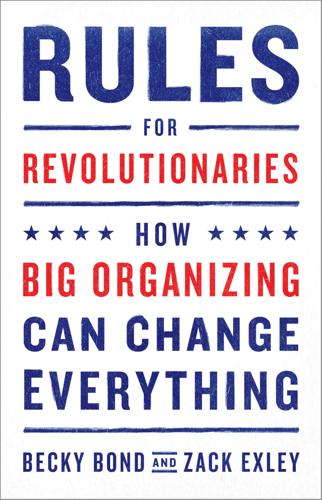
Rules for Revolutionaries: How Big Organizing Can Change Everything
by
Becky Bond
and
Zack Exley
Published 9 Nov 2016
Zack Malitz grew up in Austin, Texas, but went to college at CUNY in New York City and became deeply involved in his adopted state’s antifracking movement. I met Zack back in 2012, when CREDO was searching for a new environmental organizer. He was twenty-four years old back then but had a pragmatic idealism rarely seen in activists his age. We hired him to lead CREDO’s members in the fight against hydraulic fracturing, and he soon established himself as one of the nation’s foremost antifracking activists. Soon after I left CREDO for the Bernie campaign, Texas Zack talked his way onto his home state’s Bernie operation. At the Bernie headquarters in Austin, he put in fourteen-hour days on the campaign, punctuated by coffee, which eventually faded into Lone Star tall boys at a café/bar near the office called Rio Rita.

Does Capitalism Have a Future?
by
Immanuel Wallerstein
,
Randall Collins
,
Michael Mann
,
Georgi Derluguian
,
Craig Calhoun
,
Stephen Hoye
and
Audible Studios
Published 15 Nov 2013
Nigeria, long a prime example of the “resource curse,” appears to have begun a more successful but still fraught path to development. Several Latin American countries are significant oil exporters and some, like Brazil, are also emerging powers. The United States has reduced its dependence on international energy sources partly by investments during the financial crisis, including new hydraulic fracturing technologies. New capacity to extract oil and gas from shale is perhaps the clearest example of a possible technological fix to one of the major threats to the future of capital accumulation (more so than “greener” technologies that so far have proved harder to scale up proportionately to energy demand).
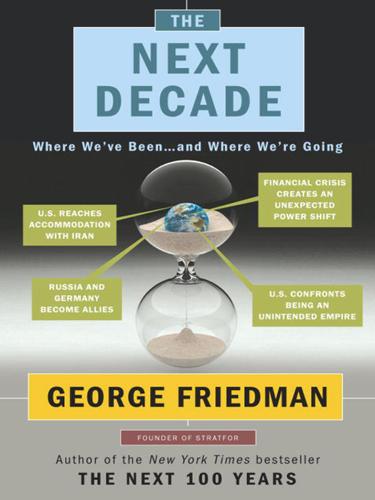
The Next Decade: Where We've Been . . . And Where We're Going
by
George Friedman
Published 25 Jan 2011
But a choice between more coal and more natural gas is not the choice the president will want to make. He will want a silver bullet of rapid availability, no environmental impact, and low cost. In this decade, however, he will be forced to balance what is needed against what is available. In the end, he will pick both, with natural gas having the greater surge. The application of hydraulic fracturing, or fracking, to the production of natural gas opens the possibility of dramatic increases in energy availability. What this technology does is to recover natural gas from up to three miles beneath the earth’s surface, where it is contained in rock so compressed that it does not release the gas.

A Pelican Introduction: Basic Income
by
Guy Standing
Published 3 May 2017
More than half these sums would be a charge on overseas owners.36 This writer has proposed a levy on rental income from private ownership and exploitation of all types of property – physical, financial and intellectual – that would be used to build the fund.37 The governance structure would need to be democratic and run on ethical principles, ensuring inter-generational equity by making the fund sustainable long after revenue sources have been depleted. The importance of ethical governance, exemplified by the Norwegian Pension Fund, is highlighted by a deplorable UK government proposal in 2016 to set up a Shale Wealth Fund.38 The fund would receive up to 10 per cent of the revenue generated by fracking (hydraulic fracturing) for shale gas, which could amount to as much as £1 billion over twenty-five years. This would be paid out to communities hosting fracking sites, which could decide to use the money for local projects or distribute it to households in cash. It is hard to avoid the conclusion that this is a bribe to secure local approval of environmentally threatening fracking operations, to which there has been considerable public opposition.

Blitzscaling: The Lightning-Fast Path to Building Massively Valuable Companies
by
Reid Hoffman
and
Chris Yeh
Published 14 Apr 2018
Instead of working drilling rigs or operating refineries, McClendon and Ward were “land men,” specialists who went out into the field to negotiate mineral rights leases with landowners. This expertise would be key to their blitzscaling effort. In the late 1990s, the combination of horizontal drilling and improved hydraulic fracturing techniques (fracking) made extracting hydrocarbons from shale rock formations economically feasible for the first time. Essentially, energy companies could drill horizontal shafts into rock formations and then pump high-pressure liquids into the wells to fracture the rock and release more oil and gas.

Badvertising
by
Andrew Simms
A moratorium on fracking in the UK was lifted by the Conservative government using the excuse of energy security following Russia’s invasion of Ukraine and volatile energy prices (this, despite energy analysts pointing out it that could not, in any meaningful way, contribute to the UK’s energy security, and there being far better ways to deliver that). When they did, Ineos quickly offered to drill a test site for free to demonstrate the potential for fracking.16 Although, amidst the turmoil of British politics, one month later another, new Conservative prime minister, Rishi Sunak, reimposed the moratorium.17 Hydraulic fracturing, commonly known as fracking, is a technology which involves the process of high pressure horizontal drilling as a way to extract oil and gas from rock formations. The method is particularly controversial given its high risks of water contamination with chemicals used in the process, the potential for earthquakes at the drilling sites and carbon leakage in the mining process.

The Wealth of Humans: Work, Power, and Status in the Twenty-First Century
by
Ryan Avent
Published 20 Sep 2016
The hundreds of wells that dot the land are spot-lit at night, and are occasionally ablaze with light when excess natural gas from the wells is burnt off. Of the new work that resembles the mass employment of the industrial past, jobs in fracking are probably the closest analogue to industrial-era factory jobs. Hydraulic fracturing (fracking) has, in fact, been around as a technique since the middle of the twentieth century. But innovations to the process, including a move to horizontal drilling, opened vast shale deposits to development at a time when the global oil price was rising dramatically. The result was an extraordinary boom in oil and gas production, centred on American shale deposits.

The Age of Stagnation: Why Perpetual Growth Is Unattainable and the Global Economy Is in Peril
by
Satyajit Das
Published 9 Feb 2016
Industrial use accounts for 22 percent of demand. Water is used to generate electricity, either directly using hydroelectric power plants, or indirectly through heat exchange in coal, nuclear, or geothermal power processes. Energy production accounts for around two-thirds of industrial consumption, with water required for coal mining; hydraulic fracturing (fracking), to extract gas and oil from shale formations; and the cooling of gas, coal, and nuclear power plants. Water is used in the production of foodstuffs, fuels, and chemicals. Textiles, paper production, and mining are especially water-intensive. Agriculture accounts for 70 percent of demand.

The End of Accounting and the Path Forward for Investors and Managers (Wiley Finance)
by
Feng Gu
Published 26 Jun 2016
Regulatory changes around the world are also a constant threat to oil and gas companies. Thus, for example, in Ohio, in May 2013, the Youngstown city council considered a proposal to ban fracking in the city, but, fortunately for frackers, turned it down. Similarly, the Niles city council passed a fracking ban in August 2013, yet rescinded it the following month (Wikipedia, Hydraulic Fracturing in the United States). And don’t forget the constant harassment of oil, gas, and particularly coal companies by environmentalists. No love lost for energy companies. Long-range planning and the substantial fund commitments required in the oil and gas industry are a particular challenge in such a volatile, political, and regulatory environment.
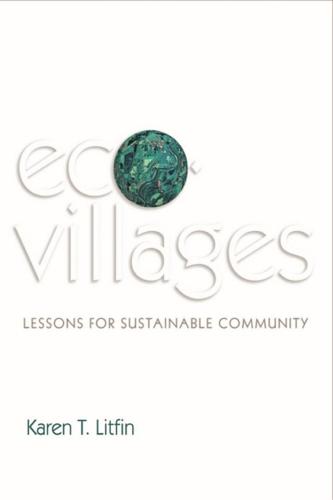
Ecovillages: Lessons for Sustainable Community
by
Karen T. Litfin
Published 16 Dec 2013
Most analysts put the date for world peak oil somewhere between 2005 and 2015. Current oil production has indeed plateaued, lending credence to the idea that peak oil is on schedule. A key consequence of “peak oil” is that more energy is required to extract the last half of the oil. Methods like steam injection, fluid injection, and hydraulic fracturing (fracking) are now being deployed to squeeze out the last bits of oil and gas. This has made metrics like EREOI (energy returned on energy invested) increasingly salient. An EROEI of 100 means the extracted oil has a hundred times the energy that was used to extract it. As EROEI declines, the payoffs dwindle – unless, of course, production is subsidized.

Everything for Everyone: The Radical Tradition That Is Shaping the Next Economy
by
Nathan Schneider
Published 10 Sep 2018
I was raised back east, lived on both coasts, and then wound up moving—returning—from New York City to Colorado with my wife and our unborn son, who would enter the world an hour’s drive from the nameless spot where my grandfather did. Compared to what it was in his time, Colorado is another kind of place, a land of ski resorts and hydraulic fracturing and tech startups. Cooperative business shores up the area’s burgeoning affluence—the mortgage-lending credit unions, the babysitting time-banks, the consumer-owned REI stores for skiwear and climbing gear. High-country electric co-ops helped plan out some of the famous resort towns. But Colorado is still a place where people have to create an economy of their own to get by.
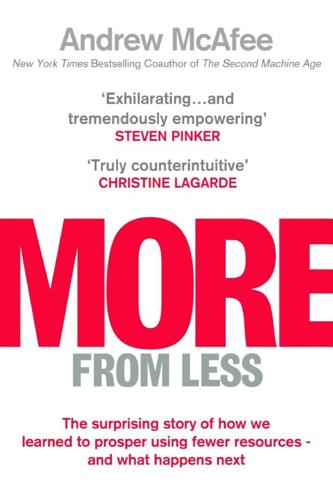
More From Less: The Surprising Story of How We Learned to Prosper Using Fewer Resources – and What Happens Next
by
Andrew McAfee
Published 30 Sep 2019
Peak oil captured the idea that despite our best efforts and ample incentive, we would come to a time after which we would only be able to extract less and less oil year after year from the earth. Most of the estimates summarized in the GAO report found that peak oil would occur no later than 2040. The report did not mention fracking, which in retrospect looks like a serious omission. Fracking is short for “hydraulic fracturing” and is a means of obtaining oil and natural gas from rock formations lying deep underground. It uses a high-pressure fluid to cause fractures in the rock, through which oil and gas can flow and be extracted. The United States and other countries have long been known to have huge reserves of hydrocarbons in deep rock formations, which are often called shales.

Lessons from the Titans: What Companies in the New Economy Can Learn from the Great Industrial Giants to Drive Sustainable Success
by
Scott Davis
,
Carter Copeland
and
Rob Wertheimer
Published 13 Jul 2020
The price of metallurgical coal, used to make steel, rose more than five times. These are precisely the sorts of unpredictable compounding factors that can make demand for equipment explode. The surge in mining demand came alongside not only a rise in oil prices but also a structural shift in how oil was extracted. Hydraulic fracturing, or “fracking,” of wells was becoming far more important than drilling holes. Wells had been fracked for many decades, sometimes with dynamite and once with a 43-kiloton nuclear bomb (1969, in Rulison, Colorado), but widespread horizontal drilling and fracking of wells as a primary strategy was new.

Radical Markets: Uprooting Capitalism and Democracy for a Just Society
by
Eric Posner
and
E. Weyl
Published 14 May 2018
Furthermore, control of everything would be radically decentralized; a COST thus combines extreme decentralization of power with partial socialization of ownership, showing that they are, perhaps surprisingly, two sides of the same coin. Far from creating a form of centralized planning, the COST creates a new kind of market—a flexible market in uses, to replace the old market based on permanent ownership. Brass Tacks Imagine that you want to develop gas resources through hydraulic fracturing. A large swath of land deep in the Canadian Rockies looks promising. You open an app on your cell phone and enter your requirements: the desired size of the territory, the spots within it that research has indicated will be most productive, their proximity to roads, and their topographic characteristics.

Boom: Bubbles and the End of Stagnation
by
Byrne Hobart
and
Tobias Huber
Published 29 Oct 2024
Fossil Future: Why Global Human Flourishing Requires More Oil, Coal, and Natural Gas—Not Less. New York City: Penguin, 2022. Feuerbach, Ludwig. The Essence of Christianity. New York City: Barnes & Noble Publishing, 2004. George, Eric, and George, Jacqueline, Fracking 101: A Beginner’s Guide to Hydraulic Fracturing. Scotts Valley, CA: CreateSpace, 2016. Giorgis, Vincent, Tobias A. Huber, and Didier Sornette. “‘Salvation and Profit’: Deconstructing the Clean-Tech Bubble.” Technology Analysis & Strategic Management (2022): 1–13. Godin, Benoît. Innovation Contested: The Idea of Innovation Over the Centuries.

A Sea in Flames: The Deepwater Horizon Oil Blowout
by
Carl Safina
Published 18 Apr 2011
You can begin to imagine the above-ground mess and risk of all this fluid. Then there is the little issue of drinking water. Experts say it’s not a problem. The New York State environmental impact statement reads, “Regulatory officials from 15 states have recently testified that groundwater contamination from the hydraulic fracturing procedure is not known to have occurred despite the procedure’s widespread use in many wells over several decades.” The Environmental Impact Statement says that there is a vertical separation between the base of any aquifer in New York (850 feet) and the target shales (below 1,000 feet, although it also, confusingly, gives this depth as above 2,000 feet).
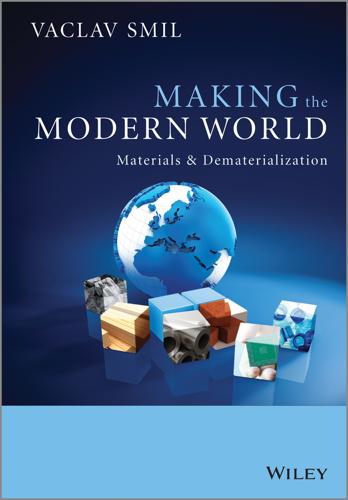
Making the Modern World: Materials and Dematerialization
by
Vaclav Smil
Published 16 Dec 2013
Annual consumption has recently fluctuated around 25 Mt/year: about 40% of this total is pure silica used in glassmaking, and a fifth goes to foundries to make moldings and refractories as well as silicon carbide for flux and metal smelting. Smaller but functionally irreplaceable uses include abrasives used in blasting and sanding, sands for water filtration, and sands for creating artificial beaches and sporting areas. A new, and rapidly rising, market is for the special kinds of sands used in hydraulic fracturing of gas- and oil-bearing shales, well-packing, and cementing. Other materials aggregated by the USGS into the heterogeneous group of industrial minerals include elements (carbon in the form of graphite and diamonds, boron, bromine, hafnium, helium, lithium, nitrogen, sulfur, strontium, zirconium) as well as both abundant (phosphate, potash, salt) and relatively rare (gemstones, industrial garnet, quartz crystal) compounds.

City on the Verge
by
Mark Pendergrast
Published 5 May 2017
By 2014, 95 percent featured decent air quality. Although power generation had gone steadily up, greenhouse gas emissions were declining, due in large part to Georgia Power’s switching from coal to natural gas—not necessarily great news for the environment, since the cheaper gas came from fracking (underground hydraulic fracturing). Tougher standards had also reduced automobile emissions. Michael Chang, a Georgia Tech professor who has served on a team monitoring Atlanta air quality since 1996, told me that they recorded the last Code Purple day (“very unhealthy”) in 2002. “We reached a turning point in 2004, when most coal plants and industrial boilers finally complied with the Clean Air Act.”

The Lords of Easy Money: How the Federal Reserve Broke the American Economy
by
Christopher Leonard
Published 11 Jan 2022
It was getting crowded because people had nowhere better to go. The search for yield pushed money into the oil industry. The money needed to find assets, and there was a gusher of assets pouring out of the ground in newly developed oil fields in Texas and North Dakota. The new oil-drilling technology called hydraulic fracturing, or fracking, opened a wild new frontier for the energy business. There was no limit to the optimism that sprang from entrepreneurs who pitched their fracking dreams to Wall Street. Money went flooding into fracking country in the form of cheap corporate debt. By one estimate, oil industry debt tripled between 2005 and 2015, rising to $200 billion.
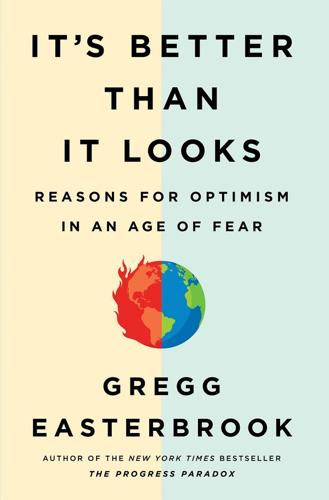
It's Better Than It Looks: Reasons for Optimism in an Age of Fear
by
Gregg Easterbrook
Published 20 Feb 2018
Before leaving office in 1981, Carter, a pragmatic moderate, deregulated oil and gas. Supply increased so rapidly that the price-maintenance cartel of the Organization of Petroleum Exporting Countries broke, ending a monopoly that once seemed invincible. In years to come engineering advances such as three-dimensional seismology, horizontal drilling, and hydraulic fracturing (“fracking”) would make production of oil and natural gas practical from shale deposits, which are common in North America, while exploration of the Bakken Formation of the Dakotas, Montana, and Saskatchewan led to discovery of substantial reserves. No government agency performed the research that led to these developments—which is why they happened!
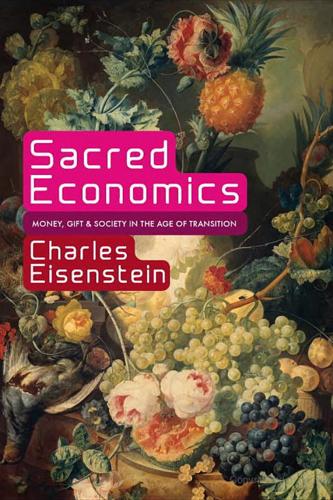
Sacred Economics: Money, Gift, and Society in the Age of Transition
by
Charles Eisenstein
Published 11 Jul 2011
When we are in harmony with our life purpose, these gateways to the life force open wide and give us a constant supply of energy. But when we lose this alignment, we must use increasingly violent methods (coffee, motivational techniques, threats) to jerk the life force through the adrenals. Similarly, the technologies we use to access fossil fuels have become more and more violent—hydraulic fracturing (or fracking), mountaintop removal, tar sand exploitation, and so on—and we are using these fuels for frivolous or destructive purposes that are evidently out of alignment with the purpose of the human species on earth. The personal and planetary mirror each other. The connection is more than mere analogy: the kind of work that we use coffee and external motivation (e.g., money) to force ourselves to do is precisely the kind of work that contributes to the despoliation of the planet.

Straphanger
by
Taras Grescoe
Published 8 Sep 2011
What we are now experiencing is a new phenomenon: the onset of the era of peak cheap oil. As old, easily accessed fields are sucked dry, oil from such unconventional sources as Alberta’s tar sands is coming on line; the extraction process, which requires enormous amounts of water and natural gas, is energy-intensive and punishing to the environment. Hydraulic fracturing, or “fracking,” in which highly toxic chemicals are used to extract natural gas and oil from shale deposits, is already a suspected cause of groundwater contamination and even earthquakes across North America. The Deepwater Horizon spill, which blackened the Gulf of Mexico with 200 million gallons of oil over three months in 2010, highlighted the desperate measures already being taken to track down the planet’s last remaining reserves of conventional oil.

European Spring: Why Our Economies and Politics Are in a Mess - and How to Put Them Right
by
Philippe Legrain
Published 22 Apr 2014
Some of it is reasonably predictable: higher demand for ice cream in summer. Some of it isn’t: out of nowhere, Gangnam Style became a global hit. Big changes often happen unexpectedly. The Berlin Wall falls. The Fukushima earthquake knocks out a big chunk of the Japanese economy and with it crucial links in global supply chains. Hydraulic fracturing (“fracking”) leads to a shale-gas boom that transforms America’s energy landscape – and Europe’s – within a few years. Apple was left for dead at the turn of the century, then vaulted to being the world’s most valuable listed company. American house prices never fell – and then they did. The Western financial system collapses.

More: The 10,000-Year Rise of the World Economy
by
Philip Coggan
Published 6 Feb 2020
In the 1990s, a few enterprising wildcatters had attempted to release gas from rock formations deep below the ground in America. Vertical drilling did not work on these formations so the wildcatters worked out a method of horizontal drilling, with the drill entering the ground at an angle and then gradually curving round. The rock is then fractured, or broken up, by blasting it with various liquids. The term hydraulic fracturing became shortened to “fracking”. One of the pioneering groups was Mitchell Energy, which found vast gas reserves in the Barnett field in Texas.37 Other fields, like the Marcellus shale in the north-east region and the Caney field in Oklahoma, were developed in the 2000s. Fracking made an enormous difference to the US energy market, after a long period when the country was dependent on imported fuels.

Material World: A Substantial Story of Our Past and Future
by
Ed Conway
Published 15 Jun 2023
Undeterred, Mitchell pushed his engineers to come up with techniques to extract the gas from the Barnett Shale, an enormous slab of source rock underlying much of the area around Dallas. It was a long, expensive, frequently depressing enterprise. They experimented with a technique known as hydraulic fracturing – injecting a high-pressure cocktail of water, sand and chemicals into the shale to try to break open the pores and allow the gas out. Fracking was hardly new: Americans drilling conventional wells had long experimented with pumping chemicals underground to try to encourage oils to flow; this technique was already helping increase the yield from ageing oilfields.

Dark Money: The Hidden History of the Billionaires Behind the Rise of the Radical Right
by
Jane Mayer
Published 19 Jan 2016
A government investigation into Massey found it negligent on multiple safety fronts, and a federal grand jury indicted its CEO, Don Blankenship, for conspiring to violate and impede federal mine safety standards, making him the first coal baron to face criminal charges. Later, Massey was bought for $7.1 billion by Alpha Natural Resources, whose CEO, Kevin Crutchfield, was yet another member of the Koch network. Several spectacularly successful leaders of hydraulic fracturing, who had their own set of government grievances, were also on the Kochs’ list. The revolutionary method of extracting gas from shale revived the American energy business but alarmed environmentalists. Among the “frackers” in the group were J. Larry Nichols, co-founder of the huge Oklahoma-based concern Devon Energy, and Harold Hamm, whose company, Continental Resources, was the biggest operator in North Dakota’s booming Bakken Shale.

The Singularity Is Nearer: When We Merge with AI
by
Ray Kurzweil
Published 25 Jun 2024
This is creating a powerful economic incentive to identify and collect kinds of data that were previously considered too difficult to bother with. It can be useful to think about data as a bit like petroleum. Oil deposits exist along a continuum of extraction difficulty.[136] Some oil gushes out of the ground under its own pressure, ready to refine and cheap to produce. Other deposits need expensive deep drilling, hydraulic fracturing, or special heating processes to extract it from shale rock. When oil prices are low, energy companies extract oil only from the cheap and easy sources, but as prices rise it becomes economically viable to exploit the tougher-to-access deposits. In a similar way, when the benefits of big data were relatively small, companies collected it only in cases where it was relatively cheap to do so.

Inventor of the Future: The Visionary Life of Buckminster Fuller
by
Alec Nevala-Lee
Published 1 Aug 2022
“I was intrigued with him and his concept that the earth could handle only so many people.” As they parted ways in Colorado, Fuller asked, “What are you going to do about it?” Taking the question to heart, Mitchell concluded that alternative energy lacked the capacity to replace fossil fuels, and he pioneered the practice of hydraulic fracturing, in which bedrock is injected with fluid to release natural gas. He became known as “the father of fracking,” which he argued was cleaner than coal, and it was entirely consistent with the principle of Spaceship Earth. Fuller had an even greater impact on John P. Allen, the founder of the Institute of Ecotechnics.

Homeland: The War on Terror in American Life
by
Richard Beck
Published 2 Sep 2024
As Jane Mayer wrote in The New Yorker, Cheney wanted the two groups to work on combining “two seemingly unrelated areas of policy: ‘the review of operational policies towards rogue states,’ such as Iraq, and ‘actions regarding the capture of new and existing oil and gas fields.’ ”[16] This was before technological advances in horizontal well bores made hydraulic fracturing, better known today as fracking, profitable on a large scale. Fracking eventually turned the United States into one of the largest fossil fuel producers in the world, but the technology wasn’t yet commercially viable in 2001, and pundits and think tank researchers often warned of an impending oil supply crunch and its attendant high prices (the U.S. government knows very well that its car-dependent citizenry will not tolerate expensive gasoline for any sustained period of time).

Palo Alto: A History of California, Capitalism, and the World
by
Malcolm Harris
Published 14 Feb 2023
It created the coal slurry pipe, crushing and liquefying the fuel for easy transport, and repeated the move with liquefied natural gas (LNG), which increases the payability of gas operations by supercooling the product to the same end. This is capitalist technology par excellence. The firm claims credit for designing and building 30 percent of world LNG capacity.2 As I write, Bechtel is moving forward with a plan to build a $1.5 billion power plant in western Pennsylvania to burn gas mined via hydraulic fracturing, which uses high-pressure water to break underground rocks and thus increase yield. This fracking technique is redolent of gold hydrolicking and has similar consequences, including a series of earthquakes in the region. (Bank of America has stepped in to finance, spending more than $20 billion to back new fracking, drilling, and pipeline deals in 2020 alone.)3 Critics say the Bechtel plant will emit more greenhouse gases than the nearest big city: Pittsburgh.4 Silicon Valley isn’t destroying itself—it’s destroying the world.

Lonely Planet Ireland
by
Lonely Planet
Polls seem to indicate the Irish are slightly less concerned about the environment than the citizens of most other European countries, and the country is a long way from meeting its Kyoto Protocol requirement for reduced emissions. The government isn't pushing the environmental agenda much beyond ratifying EU agreements, although it must be said that these have established fairly ambitious goals for reduced air pollution and tighter management of water quality. FRACKING Fracking, or hydraulic fracturing, is banned in both the Republic and Northern Ireland. There's been great interest in the shale-rich areas of the Northwest Ireland Carboniferous Basin, roughly covering parts of counties Leitrim, Roscommon, Sligo, Cavan, Donegal and Fermanagh, with pro-fracking groups lobbying hard for the exploitation of the area's reserves of shale gas, but a 2016 report by the Environmental Protection Agency (EPA) found that while many of the environmental problems related to the process could be overcome, not enough was known to ensure the protection of human health.